![[Munich High End 2024]](../jpg/munich24/munich24.jpg)
[ Home TNT-Audio | Staff & Contacts | HiFi Playground | Listening tests | DIY & Tweakings | Music & Books ]
![[Munich High End 2024]](../jpg/munich24/munich24.jpg)
Reporter: Carlo Iaccarino
The show took place from May, 9th through May, 12th 2024 at the M.O.C. facilities, in Munich, Germany
Originally written: May, 2024
Website with plenty of resources: High End Society
My "first time" in Munich took place in 2014. Yet, it feels, if not yesterday, then just a short time ago. OK, this is just an ageing symptom :-)
I can say that the Munich High End remains, in my opinion, a not-to-be-missed show for everyone interested in the global state of the industry, for good and bad. Moreover, I still suggest that everyone, at least once, take a tour in this audiophile Land of Toys.
This year, there was a sector of the show totally dedicated to headphone listening, and it was much bigger than last year; moreover, the show also provided a videogame-dedicated corner (I can think of just ONE similar exhibition, at a NYC Stereophile Show, almost twenty years ago, by Monster Cable, much smaller and technologically constrained by that age's tools...)
Unfortunately, I noticed a sharp reduction in the Soundsclever systems for a good quality listening experience for less than € 5.000.
Moreover, I noticed that some small manufacturers this year weren't exhibiting. The owners of some businesses were around; this means the show still plays an essential role for business. Conversely, I saw several brands that were new - at least, to me - almost all pointing to the highest commercial level.
Anyway, this year, too, H.E.S. provided noticeable figures, confirming the show's unchanged interest and success:
22.000 total visitors, among whom almost 8.000 (from 80 Countries) accredited as trade visitors, and, among them, 513 exhibitors (just short of 1.000 Brands) and 570 journalists (from 43 Countries).
In my opinion, the best scoop among media people was achieved by John Darko.
Last year, H.E.S. used one definition of his, Future-Fi, for the usual lecture about the industry's perspectives; and also this year more than one exhibitor setup their space using Ikea-style furniture, sticking to another cliché invented by Darko, Kallax-Fi, in order to show that Hi-Fi is part of our everyday life. This year, though, Darko.audio appeared on the bracelets that every day were laced to the wrist of every single visitor entering the show - so, his name and website have become known also to those who never heard about it.
Anyway, I indulged in attending a demo labelled Get immersed with Steven Wilson, whose catching ad poster I downloaded via the H.E.S. website

It was a demo of the Dolby Atmos remixes of well known pop and rock records. To do this, H.E.S. and PMC setup a huge Atmos system, contracting Steven Wilson - a former brand ambassador of the show - to demonstrate to the public the remixes that he - now the referring man for this kind of things - had produced.
I am not interested at all in multichannel audio, and I think that an Atmos system is totally out of place in the normal living room of a normal apartment in a normal condo - both for the plethora of loudspeakers needed to properly re-create the soundfield, that MUST embrace the listener, and for the sound pressure that - let's not kid ourselves - such a system MUST develop to achieve that bigger involvement to which it is aimed. Yet, I was glad to attend a demo of that system in the best conditions possible: a dedicated room, a state-of-the-art Dolby Atmos system, and a demo led by the top expert of immersive audio productions.
Let me state it now and clearly, this system works, it's efficient and it really places you into the music when compared to a plain stereo. Having said that, it is then a matter of personal taste. Just to say one thing, I didn't particularly like the feeling I had with any of the songs played, that the main message (in rock pieces, solo voice o guitar licks...) was unnaturally coming "from above", just like the singer was bending over me. But I also found that with certain tracks the Atmos processing produced good results. For instance, with The Who's Baba O'Riley, the initial arpeggio that fluttered around us was a pretty effect, it didn't compromise the musical message to which we are used to. On the contrary, it made it better: only the arpeggio was fluttering, while the full-chord slam exploded right in your face, with reverberation that filled the room.
Let's start with two innovations that I have seen in the sector dedicated to startups.
Prof.Dr. Francesco P. Volpe is the CEO and owner of VOLPE, a company that produces a CD player drive mechanism, the CDProV model, made specifically to be a plug and play replacement for the famous Philips CD-drives, now out of production for some time, which equip many of the most renowned CD players.
Here he is with his two creatures :-)
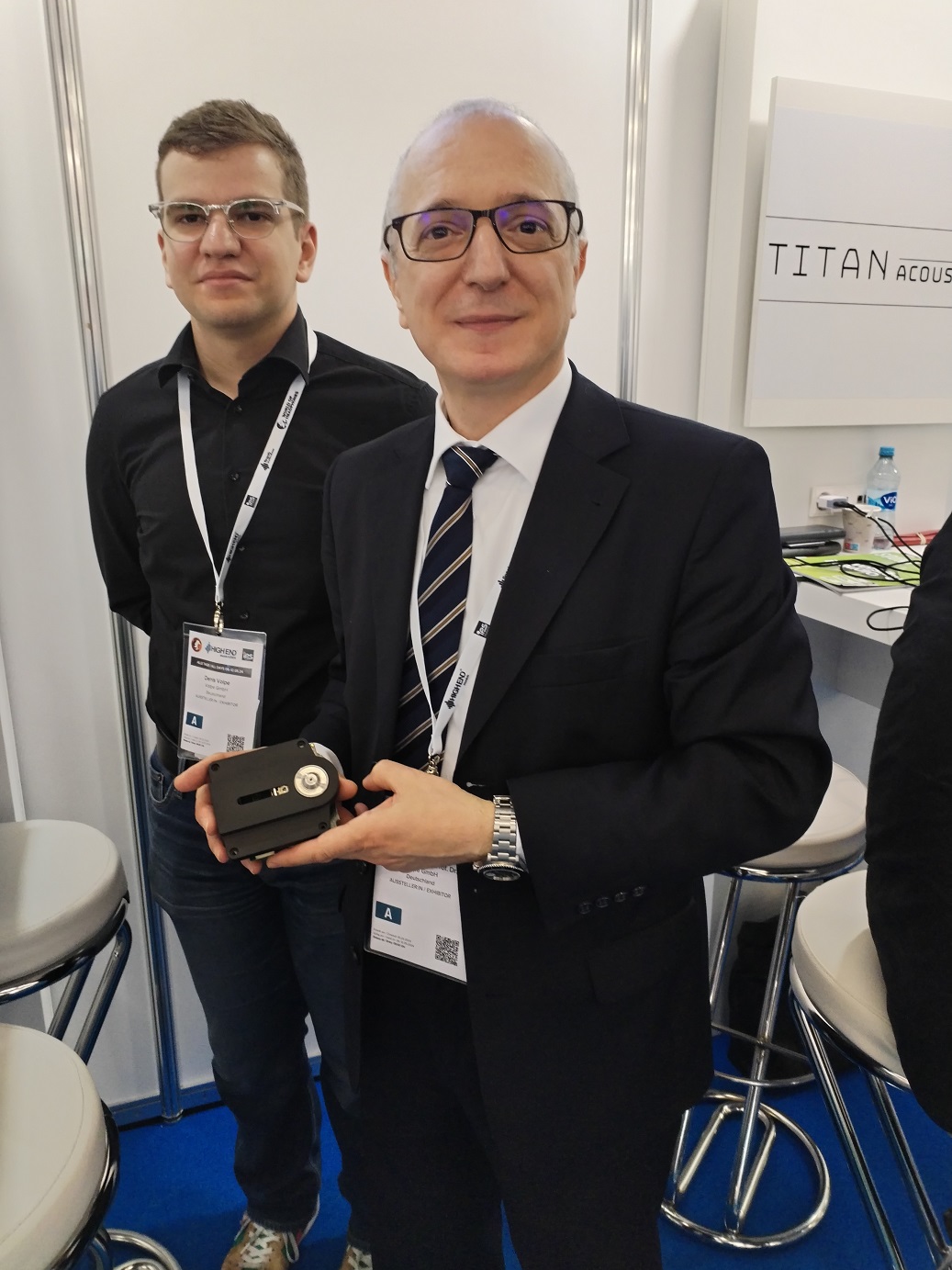
This already seems to me to be extremely interesting news, because it allows us to "recover" many CD-Players or transports which can easily play well, but are perhaps stopped waiting for impossible repairs to their drive mechanism.
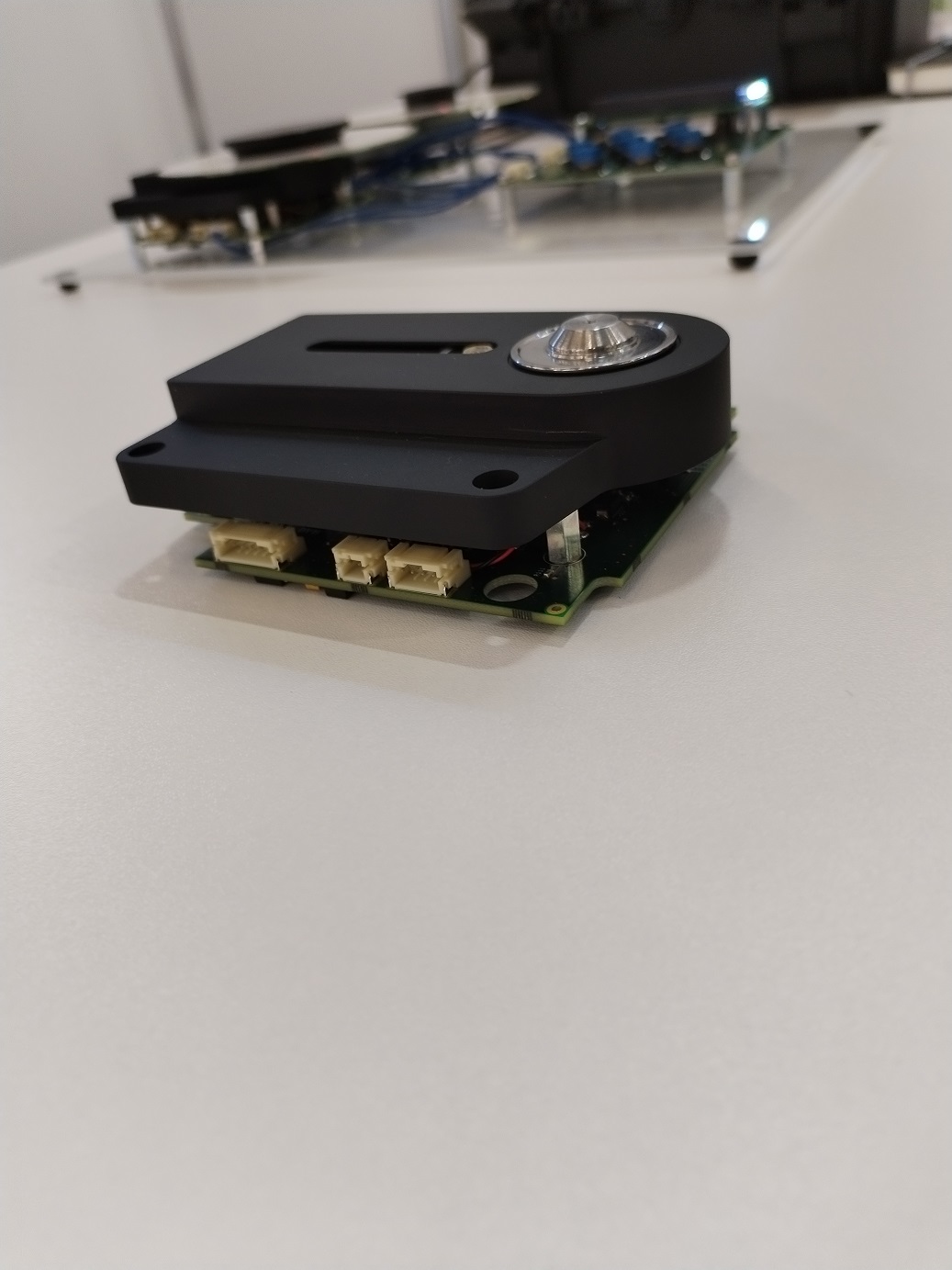
But this is to all intents and purposes a drive mechanism made today, with today's knowledge, with better materials (the body is made from a single piece of aluminium) and with other improvements - an improved error correction system, so much so that it has no springs at all; a RAM buffer to better absorb shocks and jolts; a digital output not only in S/PDIF, but also I2S, with master clock; an analogue output (the DAC used will be from ESS).
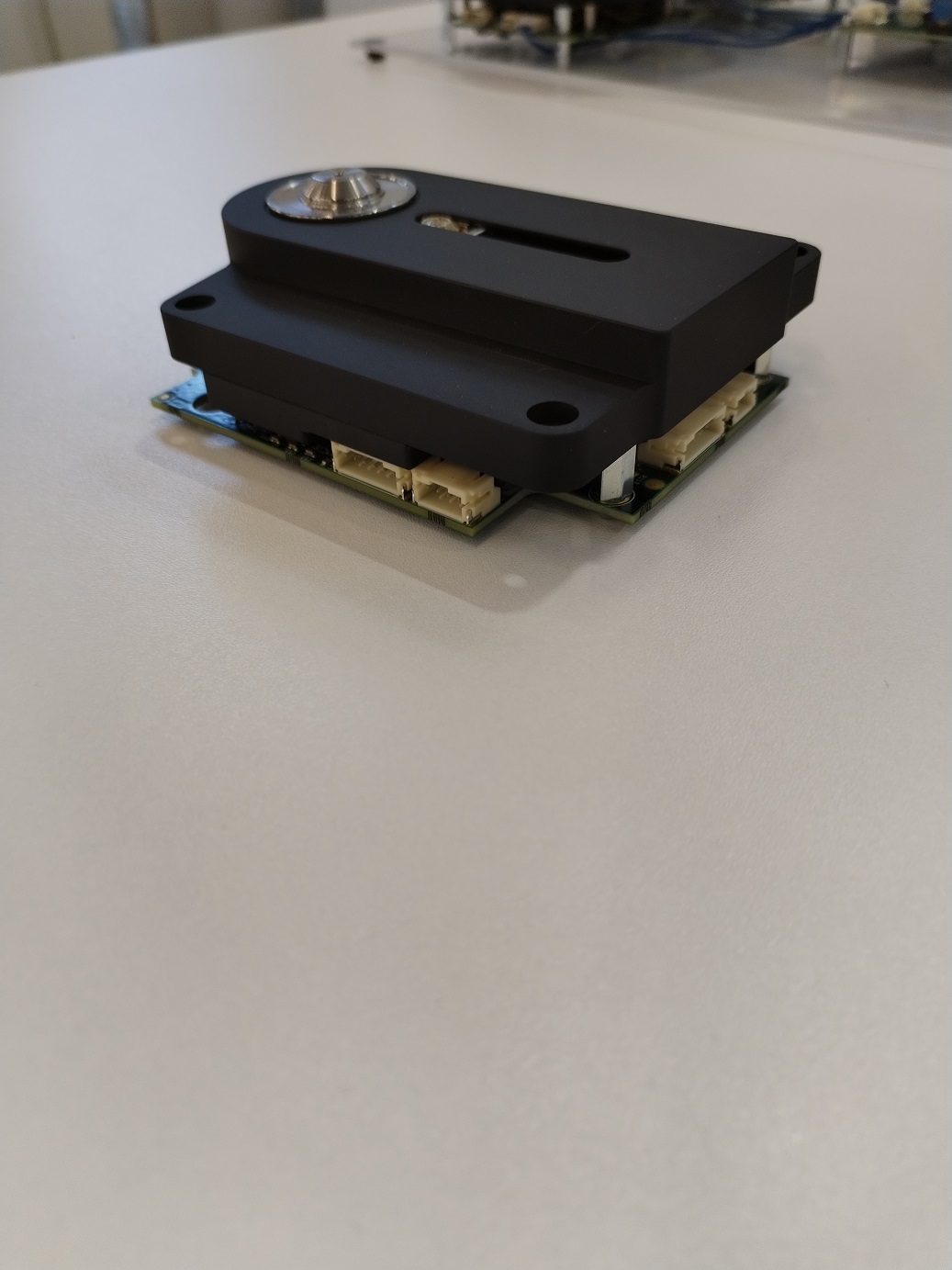
In short, both a replacement and a new mechanism for anyone who wants to build a CD player today. In fact, another exhibitor approached, interested because he had tried to produce a CD player, but then abandoned it due to the difficulty in finding quality mechanics dedicated only to CD (no DVD).
Prof. Volpe will NOT supply his mechanics directly to private individuals, but to the technical assistance laboratories to which they will turn. Prices are not popular: in the case of a single person who wants to resurrect his player, the assistance laboratory can request the shipment of a single drive unit, at the price of € 1,450. Obviously, for bigger orders, the prices will be different. Finally, Volpe Audio can also supply individual spare parts for the Philips mechanics (the laser, the rotor shaft, the seals, the suspensions, etc.).
In short, we did not start with a cheap indication. But, nonetheless, it is an unexpected solution which, avoiding the obsolescence of old glories, and even allows for savings, compared to the current outlays required for those few high-level CD players still available.
A second novelty is software, not hardware, and is presented not by a manufacturer, but by a German online magazine, Low Beats, in association with a PR company specializing in audio and video companies, RTFM. There is humour in the choice of the name, because it is a famous acronym among computer nerds: Read The Fucking Manual (before you bother me wondering how operate the appliance).
As far as I can tell, the magazine did binaural recording of the impulse response, in their room, of several speaker models they tested. Based on the collected data, they developed mathematical filters to load into capable music file players (I understand that HQ Player is one of these), applying this "sonic signature" of the speaker. So, the the user will be able to load the filter corresponding to the chosen speaker, and listen to the music on headphones as if it were reproduced by that speaker in the magazine room.
For now, they have only prepared individual filters for some of the speaker models tested, which will be made available shortly on the magazine's website; the plan is to progressively expand the availability of filters. Making everything available free of charge to every reader, with an eye to collaborating with shopkeepers, to set up such a system also for their rooms and for the devices on sale, even if not tested by the magazine (I imagine this will not be free).
As anticipated, this year there were less affordable systems, i.e. under € 5,000, than in the past.
Let's start with an interesting proposal by Audio Physics and Electrocompaniet.
Electrocompaniet provided the RENA SA2, a device which, for € 1,249, combines in a single, small chassis, a 2 x 75 W switching amplifier, a DAC (up to PCM 192/24 and DSD 128) with DSP and a streamer capable of supporting the most popular services, it is Roon Ready and can also play streams coming from internet radios and files saved locally. They developed the fully in-house software platform and, if I understood correctly, the architecture of the DAC. Furthermore, it has WiFi connectivity, as well as, uncommonly, WISA capability, to drive wireless speakers that meet the same standard. It is controlled with a remote control or, better yet, with the app, which is also proudly proprietary.
Audio Physics provided their Classic 3 loudspeaker, a small two-way bookshelf speaker with a dome tweeter and a glass fibre cone mid-bass driver, costing € 1,590.
With a little less than € 3,000 you end up with a nice system, complete and updated, dedicated to digital signals, be they music files, or physical media coming from your CD player connected to the SPDIF input of the Runa, and, perhaps, from your TV, hooked to one of its two optical inputs. The representative of Audio Physics claimed that Runa could drive even larger speakers than the one chosen in order to keep the price down. Furthermore, Electrocompaniet, in the same line as Runa, also offers a small amplified subwoofer (Audio Physics has one in its catalogue, but it is much larger and more powerful), the Sira L1 model, which is also Wisa certified.
Both the electronics and the speakers are, in my opinion, aesthetically very pleasing, and easy to insert into your home environment. Unfortunately, my photos turned out very badly, but I think it's good that you see them, so I refer you to the web pages of the two products: here is the link for the Classic 3 and here is the one for the Rena SA2.
Another interesting SoundsClever proposal was made by Eversolo and Epos.
The first is a Chinese brand recently become very popular; the second is a historic brand of loudspeakers, recently taken over and brought back to its former glory by Karl-Heinz Fink, one of the greatest speaker designers, who also produces higher-level and more expensive loudspeaker models under the Fink Team brand.
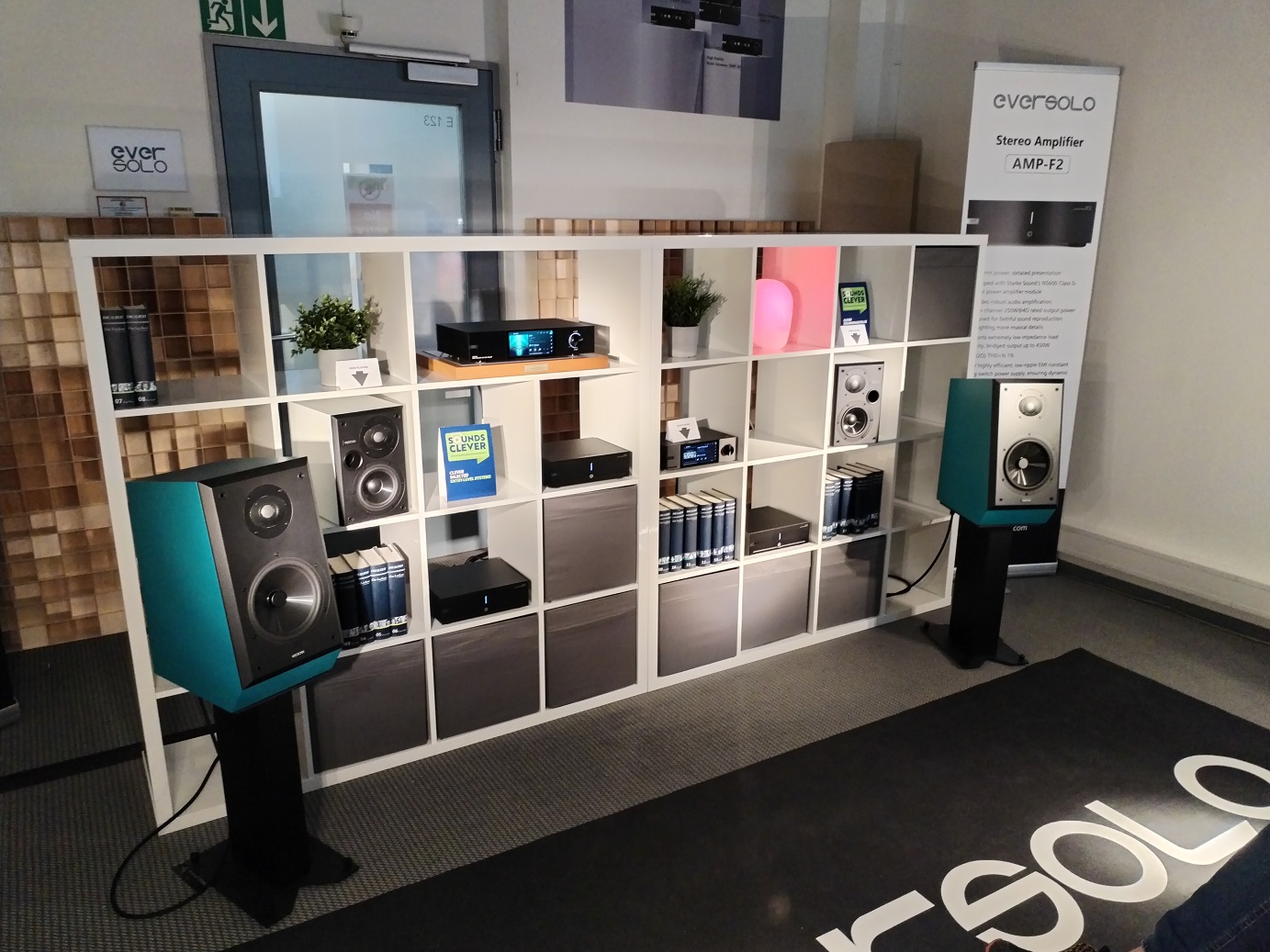
In the photo, this system is made of all the components arranged on the same row in the bookcase: the small two-way loudspeaker (truly "bookshelf") EPOS ES-7N, costing € 2,000, plus the switching stereo power amplifier EVERSOLO AMP-F2, for € 800, and the EVERSOLO DMP-A6 Master Edition music file player/DAC/streamer, for € 1,300.
Listening to a fusion music track that I knew well, by Acoustic Alchemy, I liked what I heard. Of course, a bookcase will rarely be placed in the middle of the room, rather than against the wall (and probably for this reason the reflex outlet is located on the front panel), and the vibrations transmitted from the speaker to the shelf could dirty its emission (but the show's background noise masked it).
Here is a detail of the Eversolo DMP-A6 Master Edition.
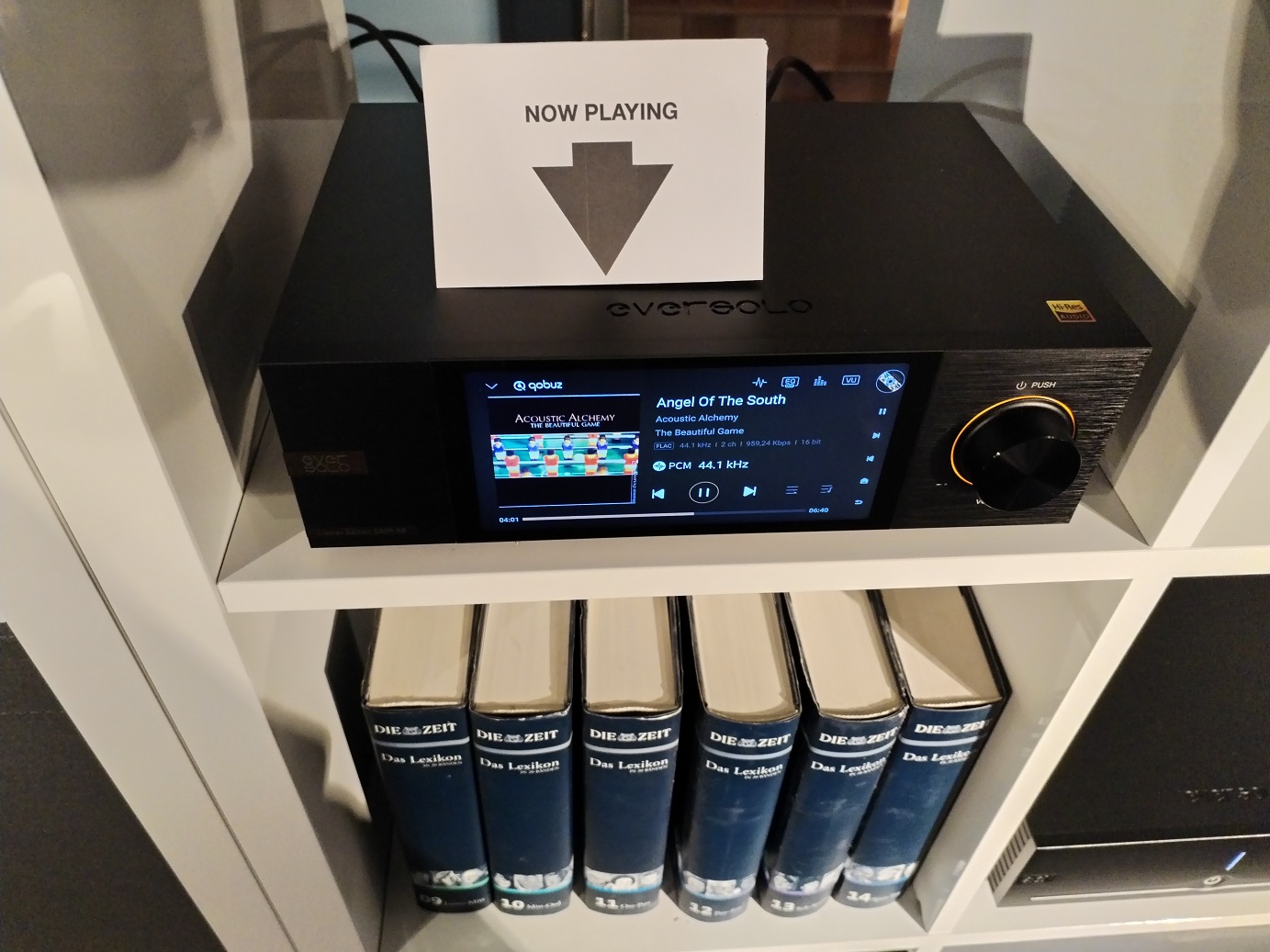
It plays practically any type of audio file, provided by all the main streaming services (not Apple music), it is Roon Ready, the DAC section (up to DSD 512 and PCM 764/32, also MQA) uses 2 ESS 9038Q2M chips. Furthermore, in the clock section it mounts two oscillators with Femtosecond precision. In the current-voltage conversion stage downstream of the DAC chips, it mounts the OPA1612 integrated operational amplifiers from Texas Instrument which enjoy audiophile fame. If you don't care about these last two features, you can "settle" for the "plain" version, the DMP-A6 model, spending only € 860. Both models are managed either by touching the beautiful and large screen, or with an optional traditional remote control, or via the tablet/mobile phone with the inevitable "dedicated app", and it is with this last method that the demo was conducted.
Here is a well-deserved close-up of the Epos ES-7N speaker.
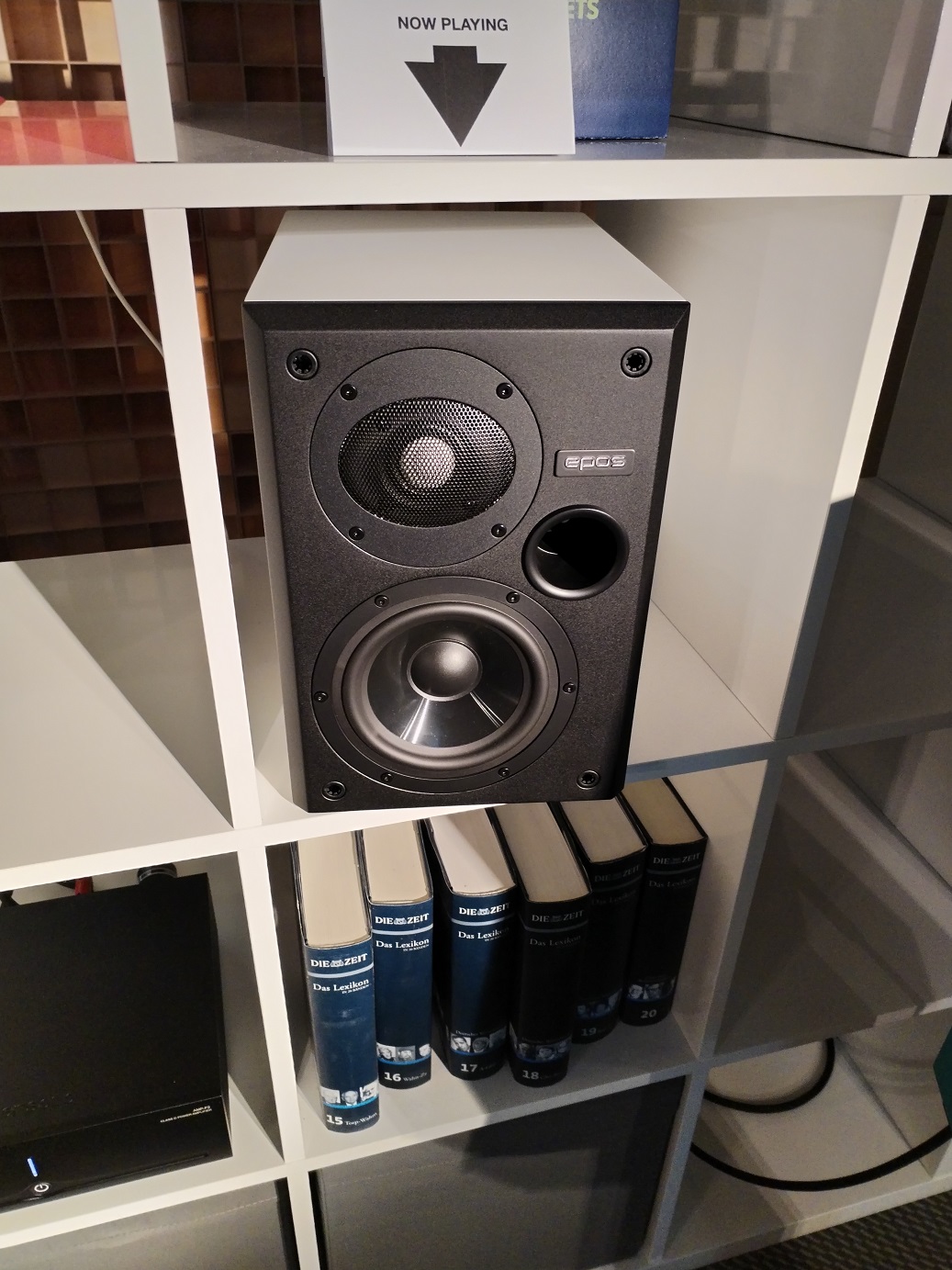
The designer's attention is revealed by details that do not appear to the eye. On the back there is a switch to select two different positions depending on the placement of the speaker, whether with air behind it or in a bookcase against the wall. And the internal reflex duct is bent and also perforated.
Of course, the room was Eversolo's, so they were also showing the highly anticipated DMP-A8, their flagship music player/DAC/streamer, expected to cost around € 2,000. The peculiarity of this model is in its internal components: the DAC is from AKM, "split" if I understand correctly, between two chips, AK4499EX and AK4191EQ, for separate treatment of filtering/upsampling and conversion. Here, too, we find the double femtosecond oscillator. Furthermore, and this is no small feat, it is a device that can act as a complete preamplifier with high-end ambitions. It also has an analogue input, has completely balanced analogue circuitry (in fact it also has inputs and outputs in XLR format) and - another highly emphasized feature - it has a discrete analogue volume control (so-called R2R circuitry). Another atypical function is the digital output (also for the DSD stream) in I2S standard on an HDMI connector with programmable pinout. In short, a true "flagship", portrayed below together with the two amplifiers it drove, the two black boxes on the row of books, which are nothing more than two Eversolo AMP-F2 power amplifiers, bridged.
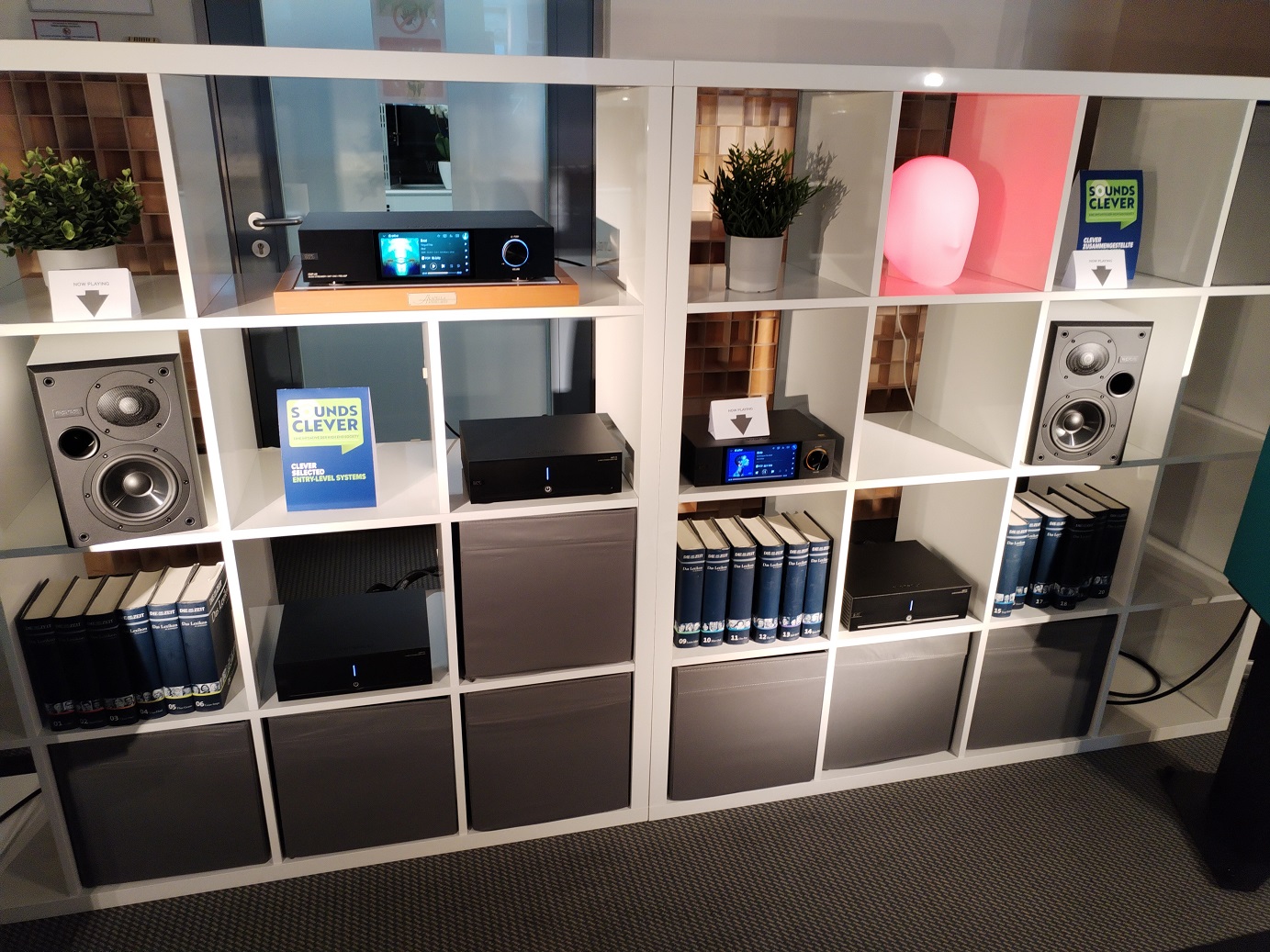
Each of the amplifiers drove the EPOS ES-14N stand-mount speakers, presented last year, pictured here together with their small ES-7N brothers, with which they share the tweeter. Obviously, the sound was better, more extended in the bass and, apparently, more refined... but I preferred the SoundsClever system.
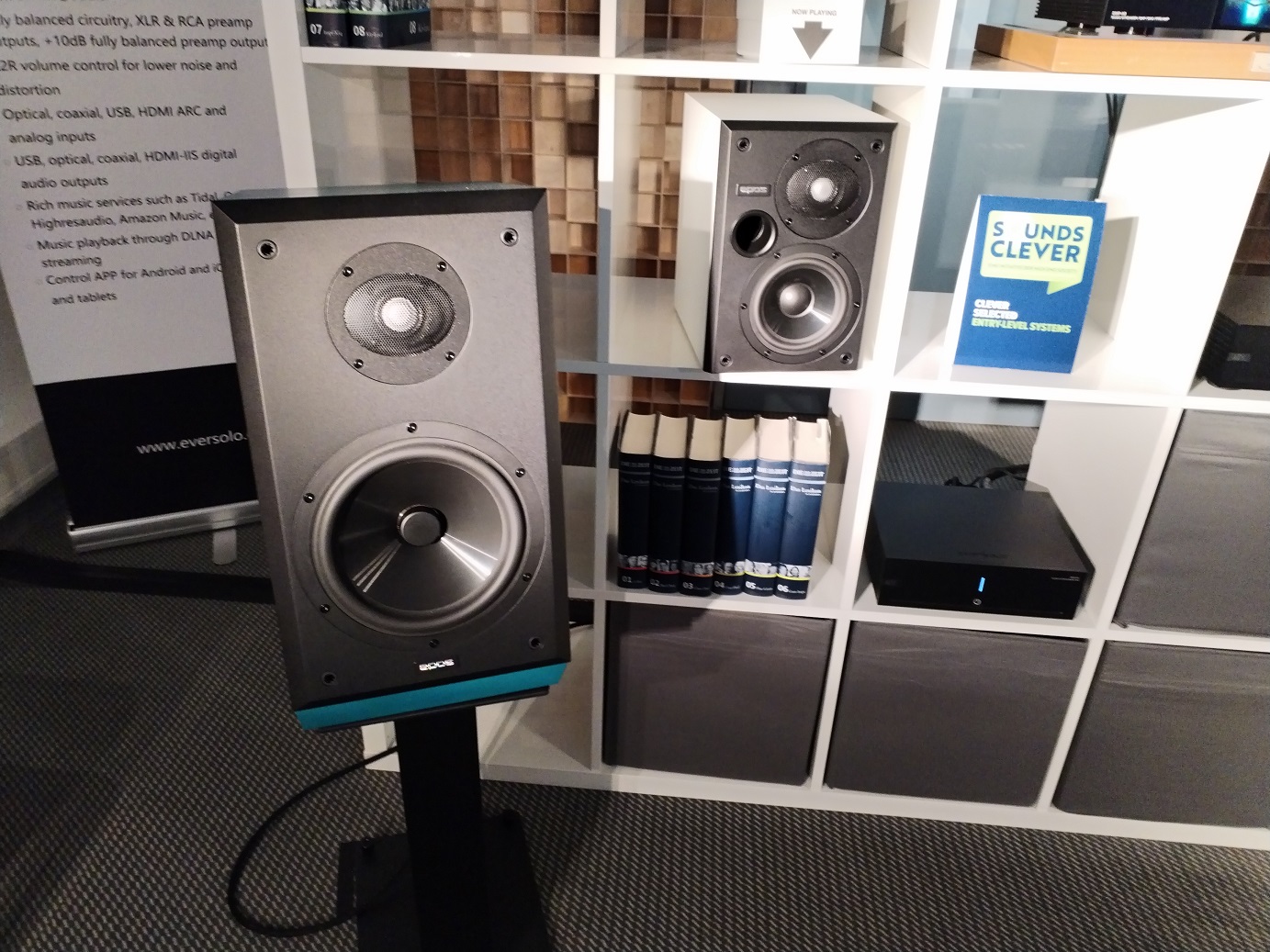
Let's stay with Epos, which also had its own independent room, where it exhibited the new arrival in the series, the ES-28N floor-standing loudspeaker, costing € 4,000, driven by Canor electronics.
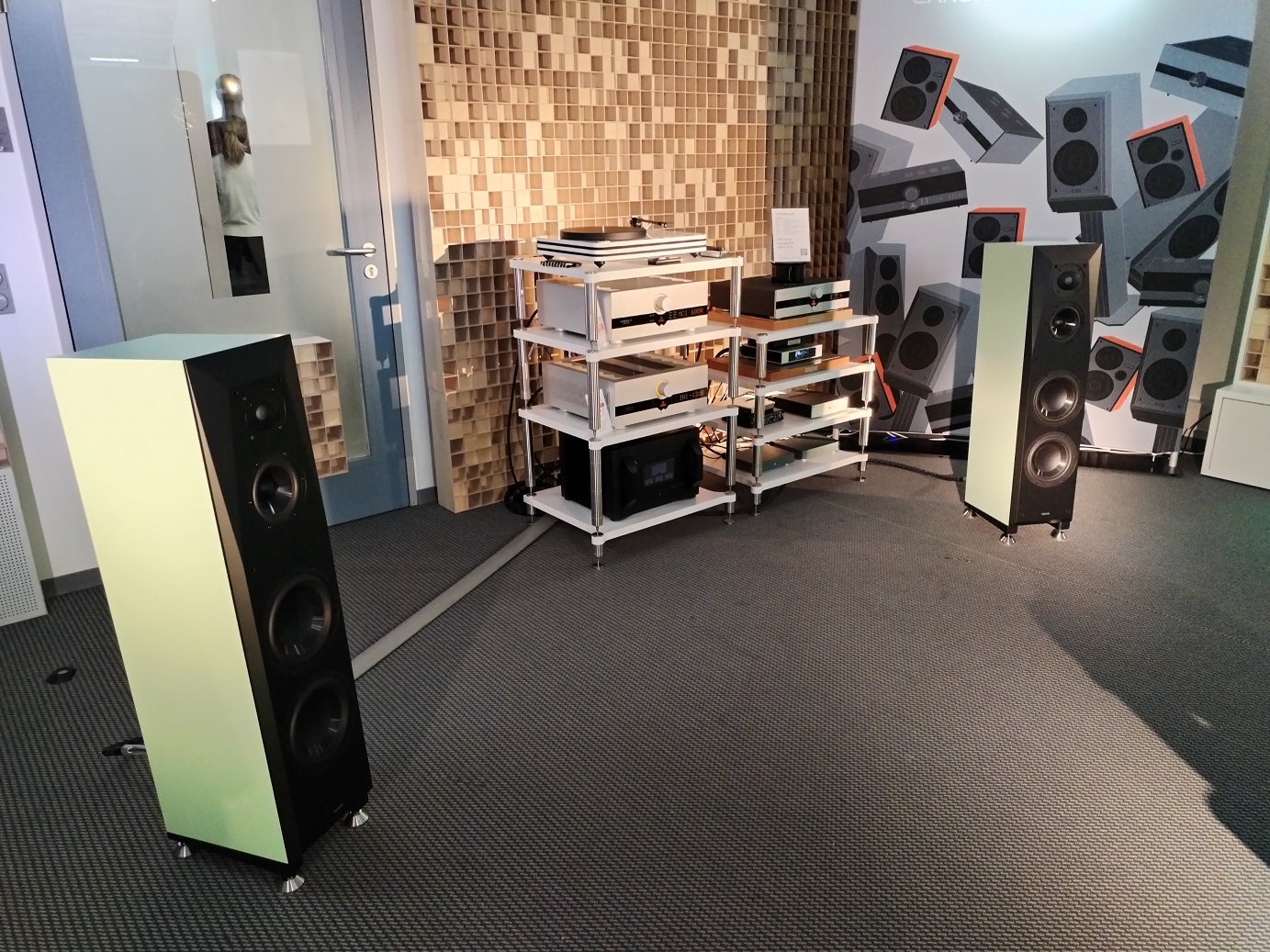
The sound emitted by this other system was very different, and still very pleasant, despite the general confusion.
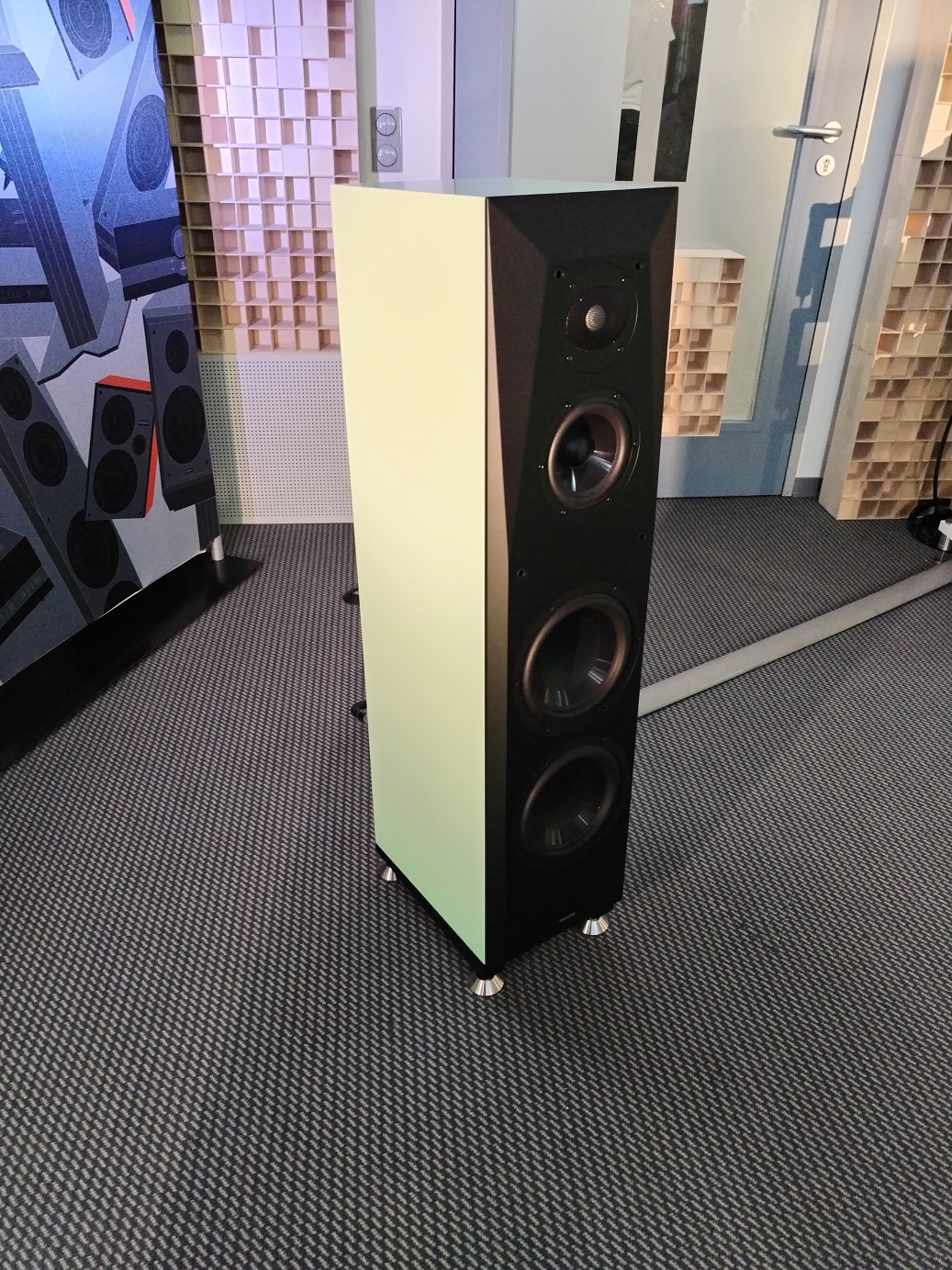
Another SoundsClever proposal came from Lindemann.
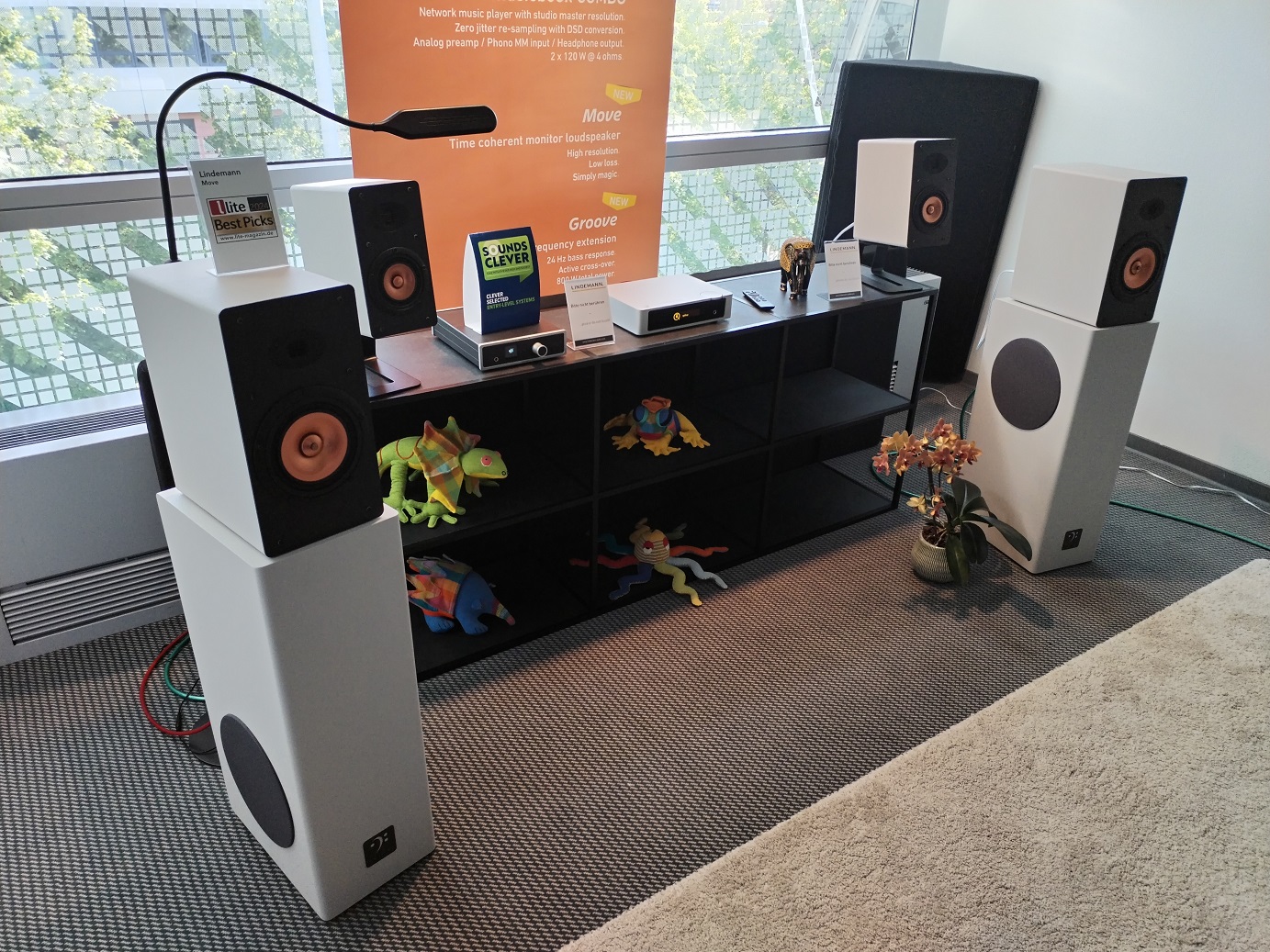
This German manufacturer showed a system consisting of the Move Mini little loudspeakers, for € 2.180, and the Woodnote Combo integrated amplifier which can work also as a DAC and as a streamer, for € 1.980. Everything was placed on a console (in the picture, the amplifier is the box placed under the sign identifying the SoundsClever system). On the same console you can also see the Pre/Streamer/DAC that belongs to the upper Musicbook line, the Source II model was connected to the Move bookshelf loudspeakers, front row, each one sitting on its Groove dedicated amplified subwoofer that acts also as a stand - this was actually the main system exhibited.
Here a "family portrait" of the Woodnote line: on the right the Combo version, amplified (the one used in the system showed), on the left the Solo version, sporting a line output only.
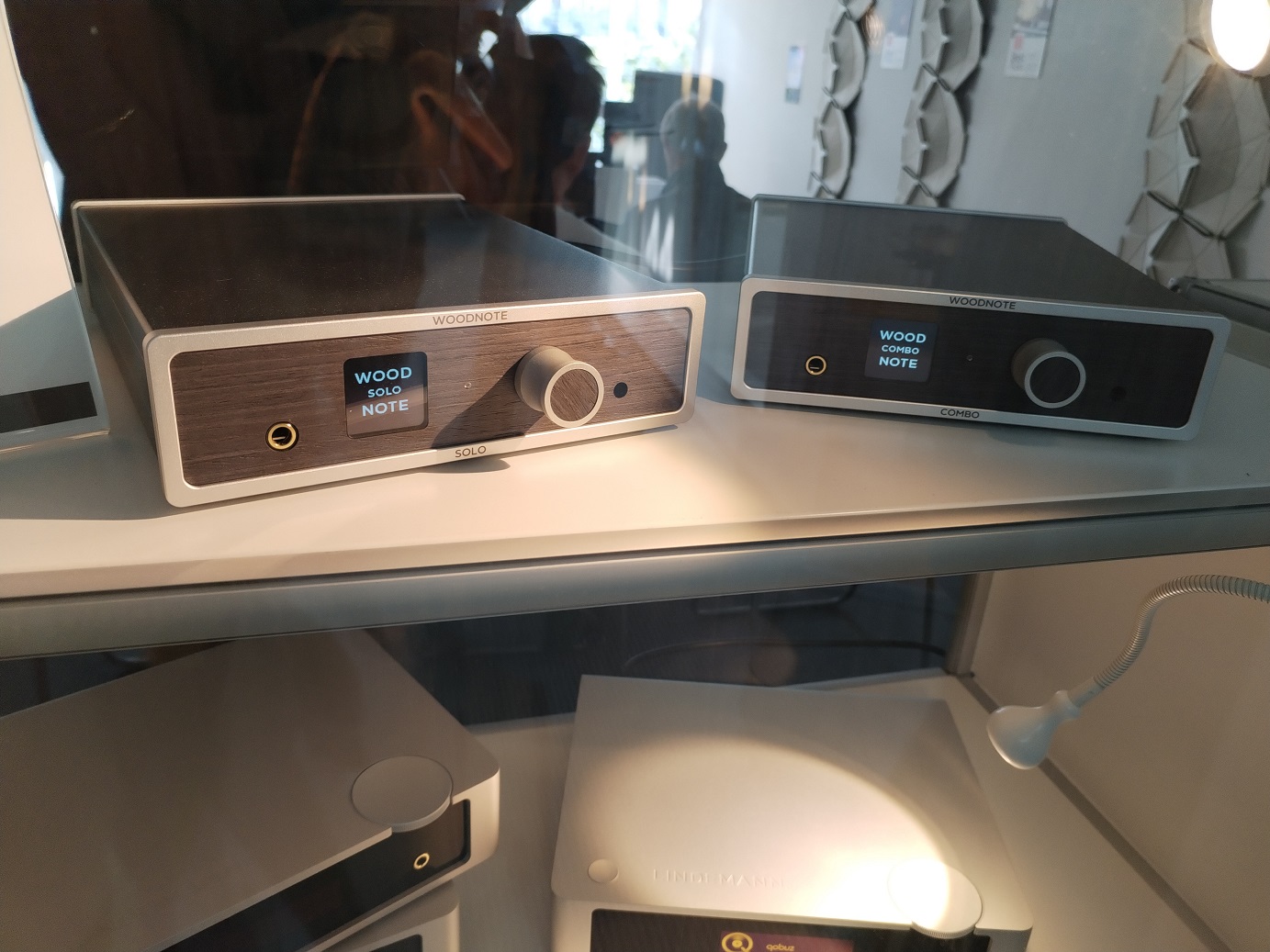
Here a close-up of the Move Mini little loudspeakers.
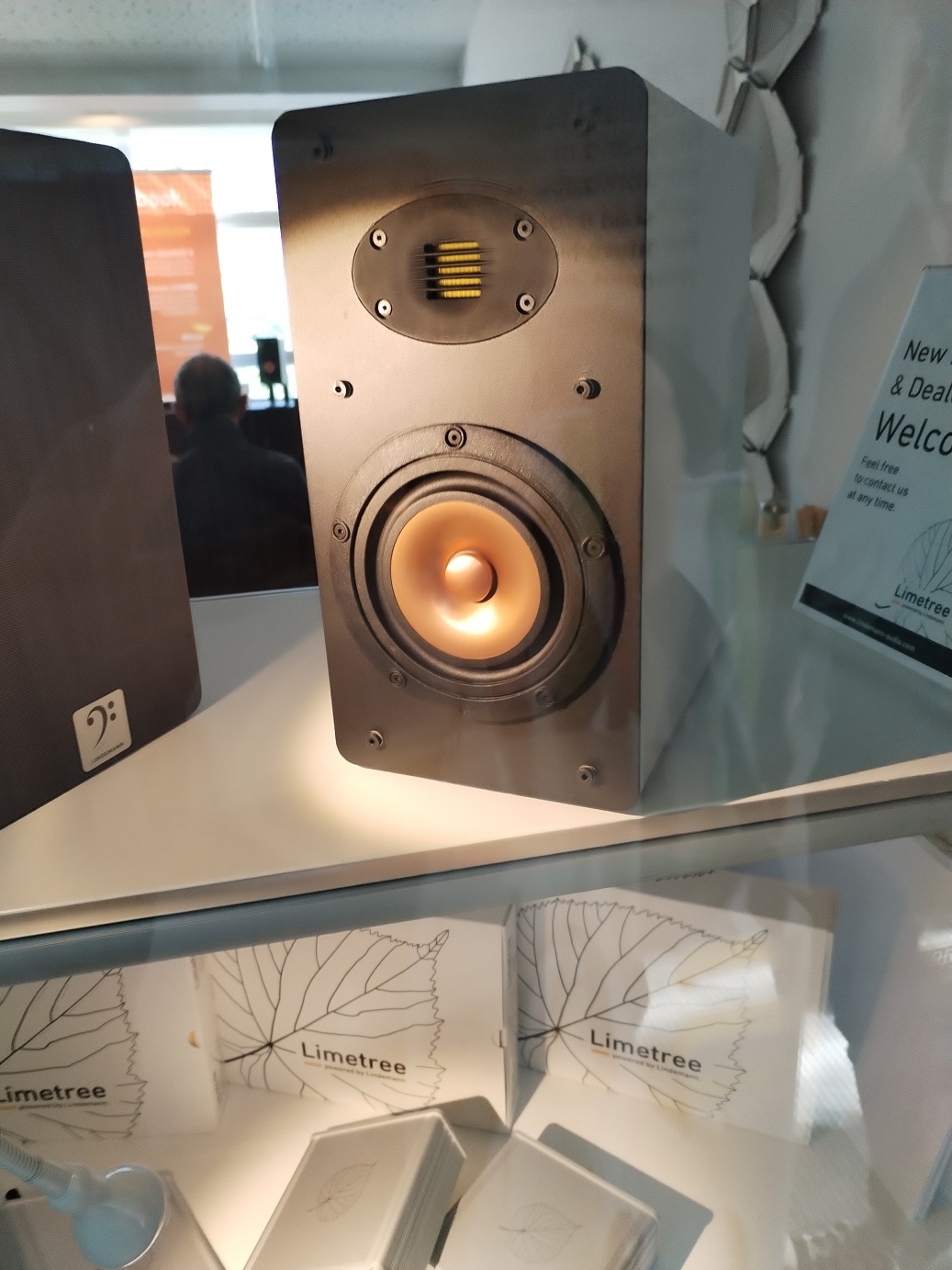
As well as their bigger brothers Move, they look like normal two-way speakers, but they actually mount a wide-range single driver, supported by a super-tweeter. As usual, the listening during the show can only be indicative, but, as far as I'm concerned, the large system (so to speak, given the reduced dimensions) sounded much more balanced than the small one.
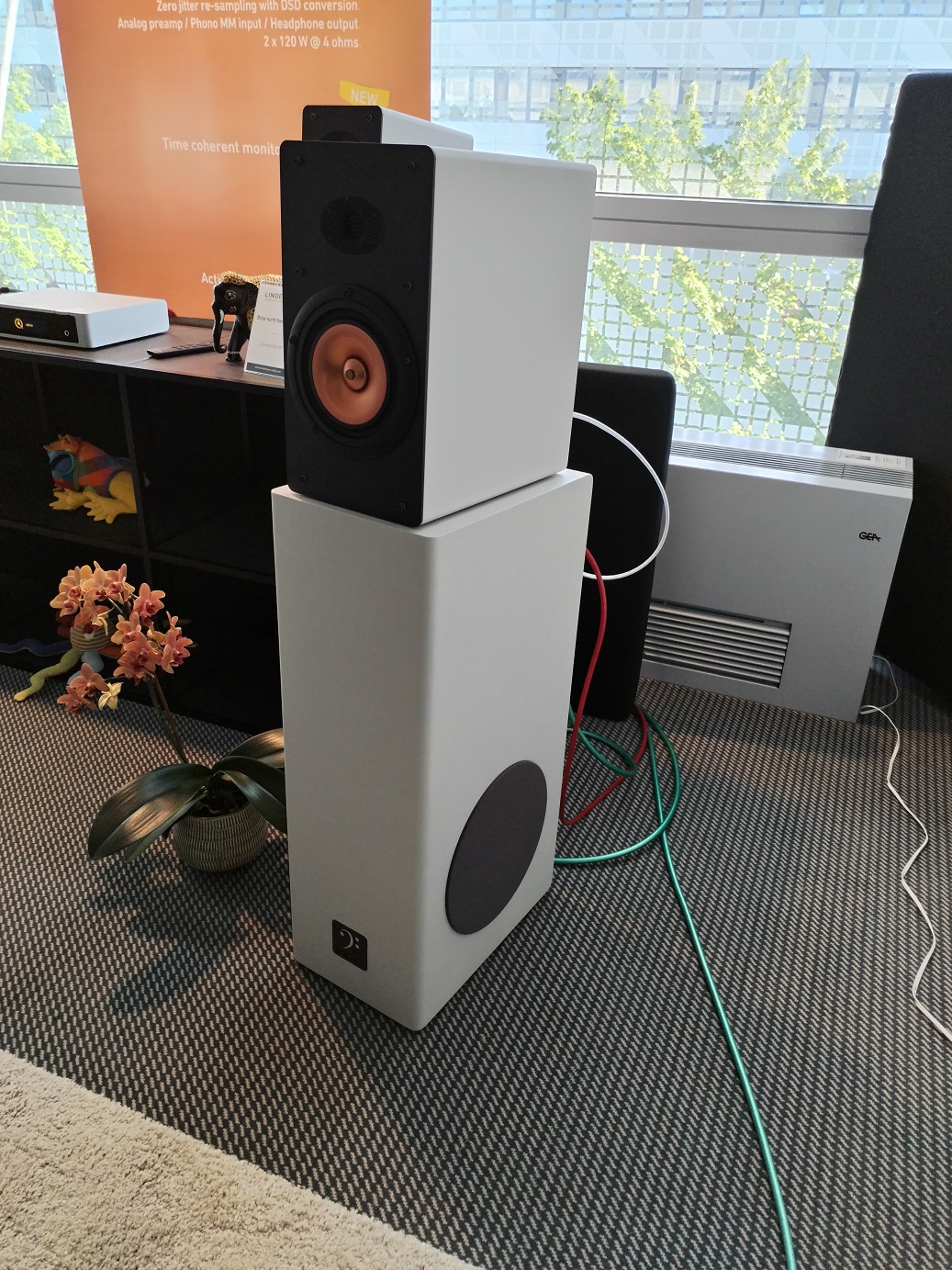
Here we have a detail of the rear-side connectors of the Woodnote Combo, that follows the now generalized trend of providing all-in-one devices with the widest possible flexibility of connectivity.
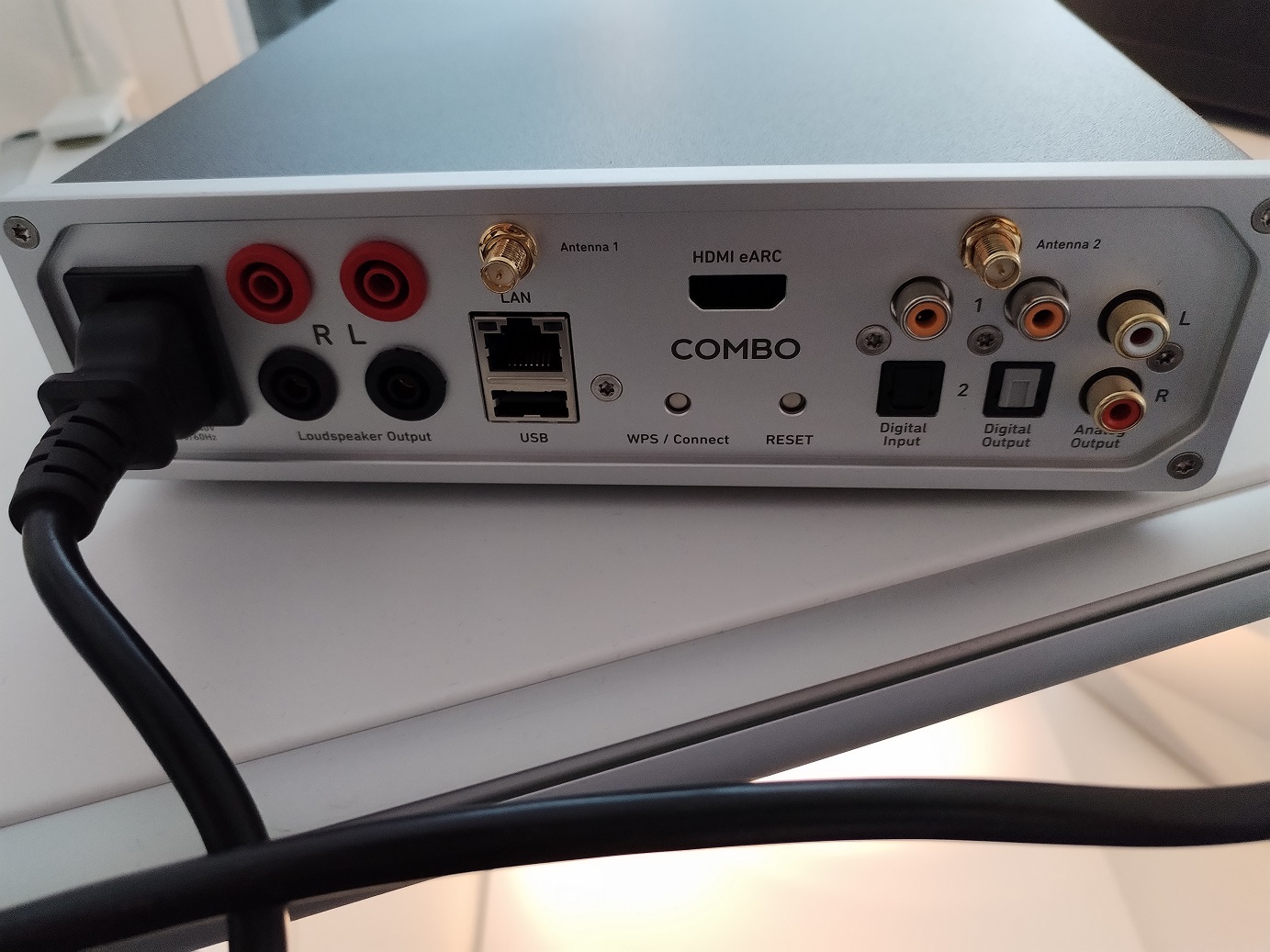
This year, too, Sonoro proposed a SoundsClever system.
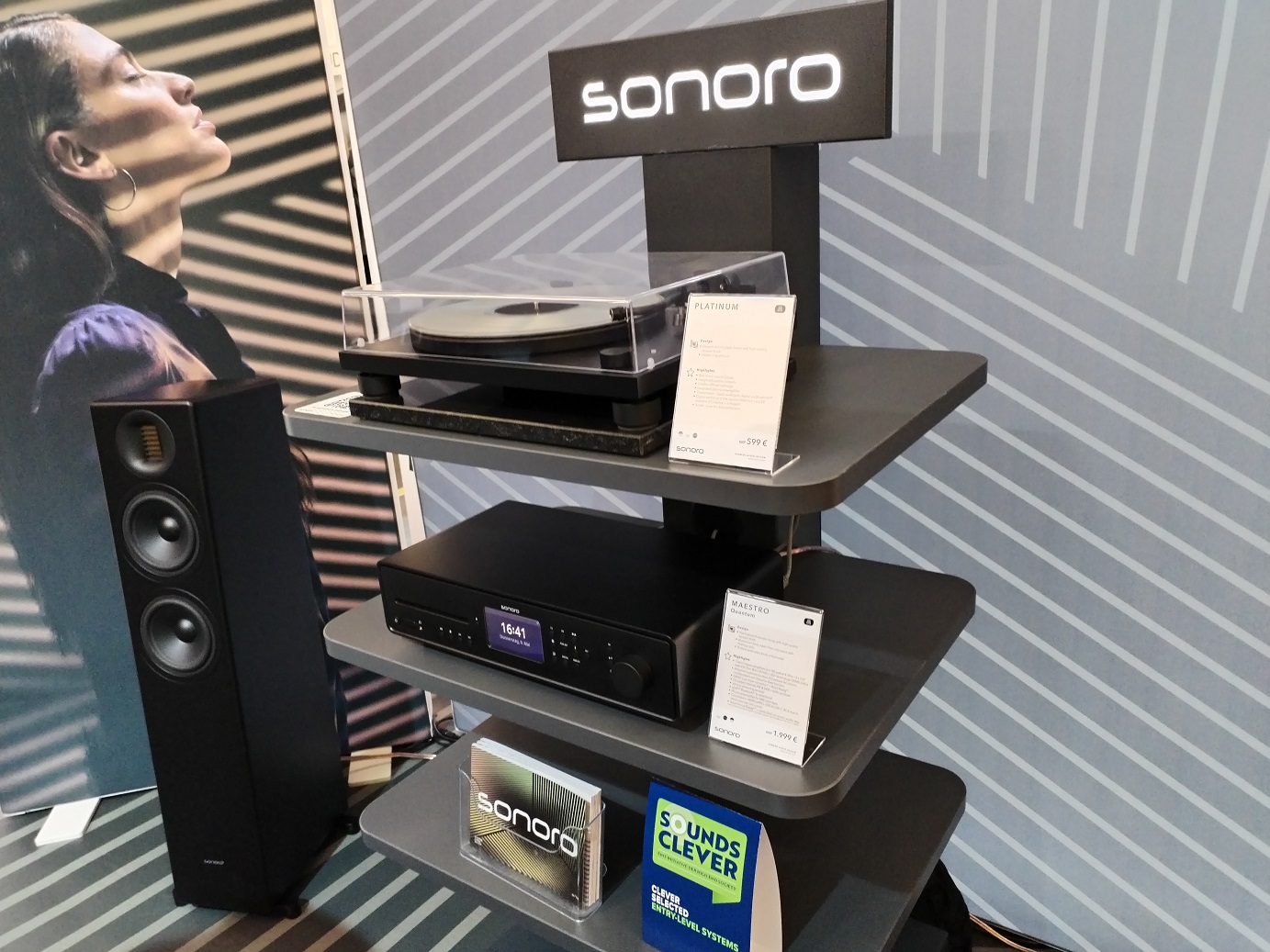
An all-in-one device is also provided for this system, the MAESTRO Quantum integrated amplifier/streamer/DAC/disc player, for € 2.000,
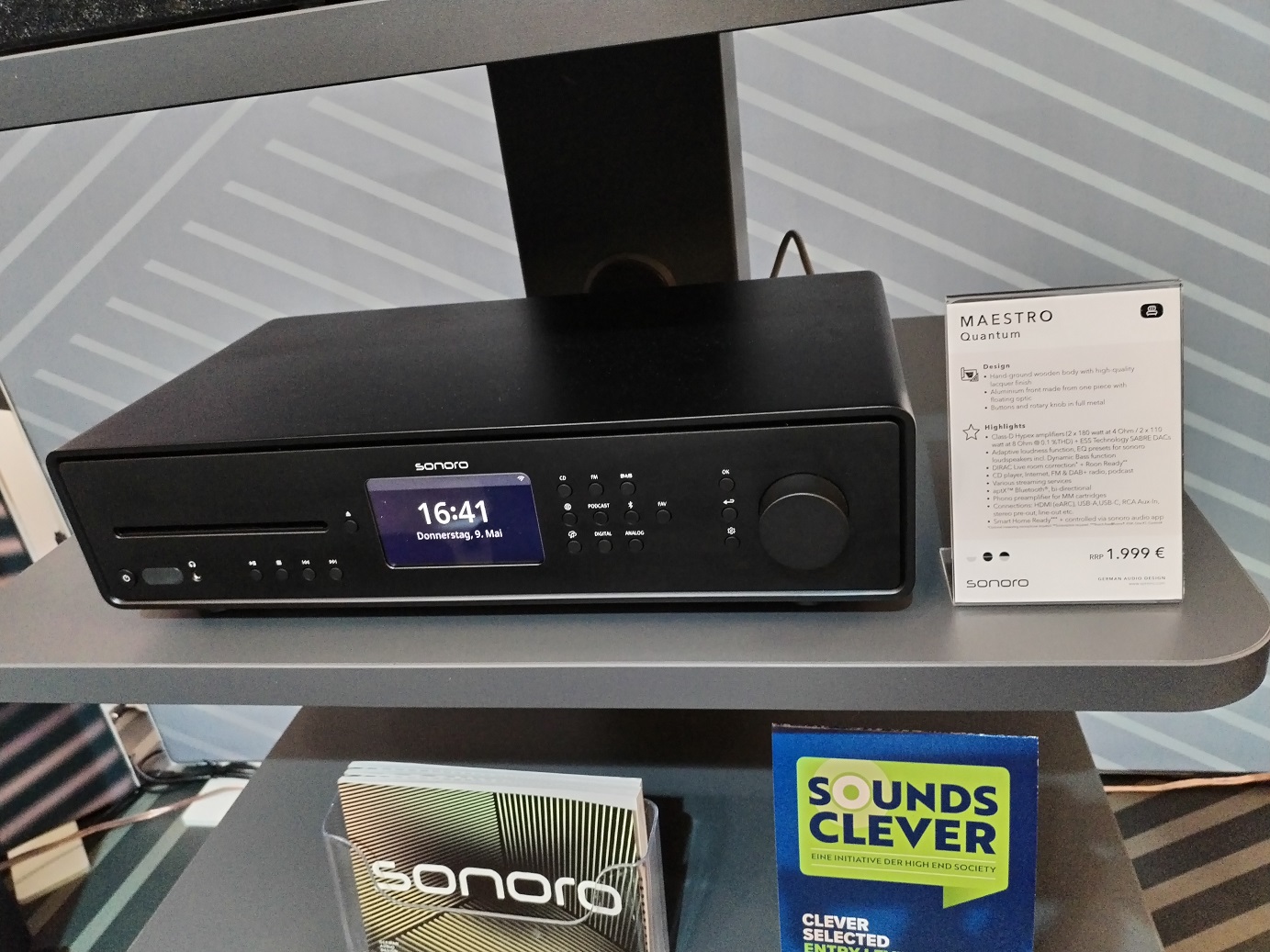
placed between a turntable, the PLATINUM, for € 600
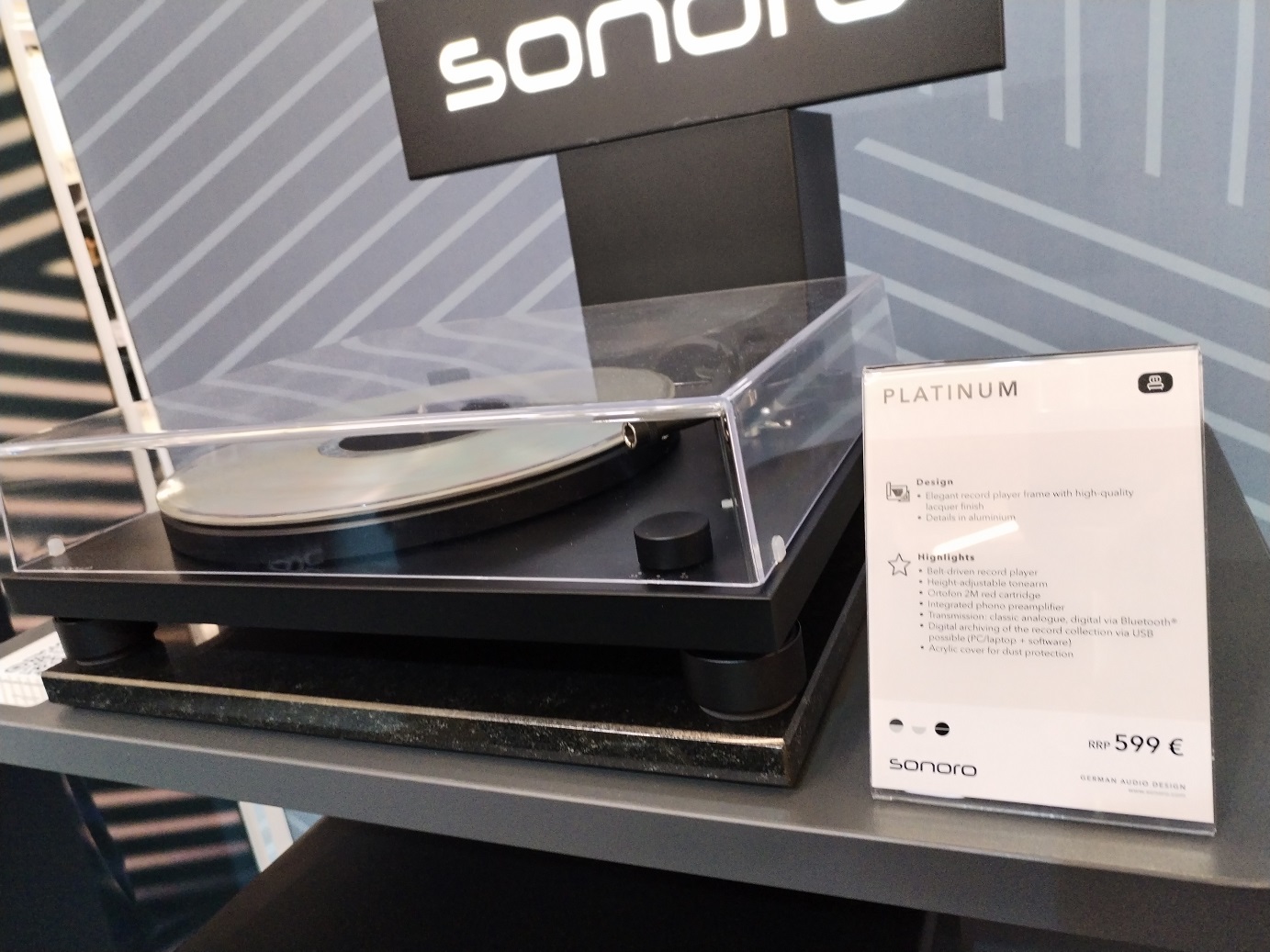
and the GRAND ORCHESTRA floor-standing loudspeakers with an AMT tweeter, for € 2.400.
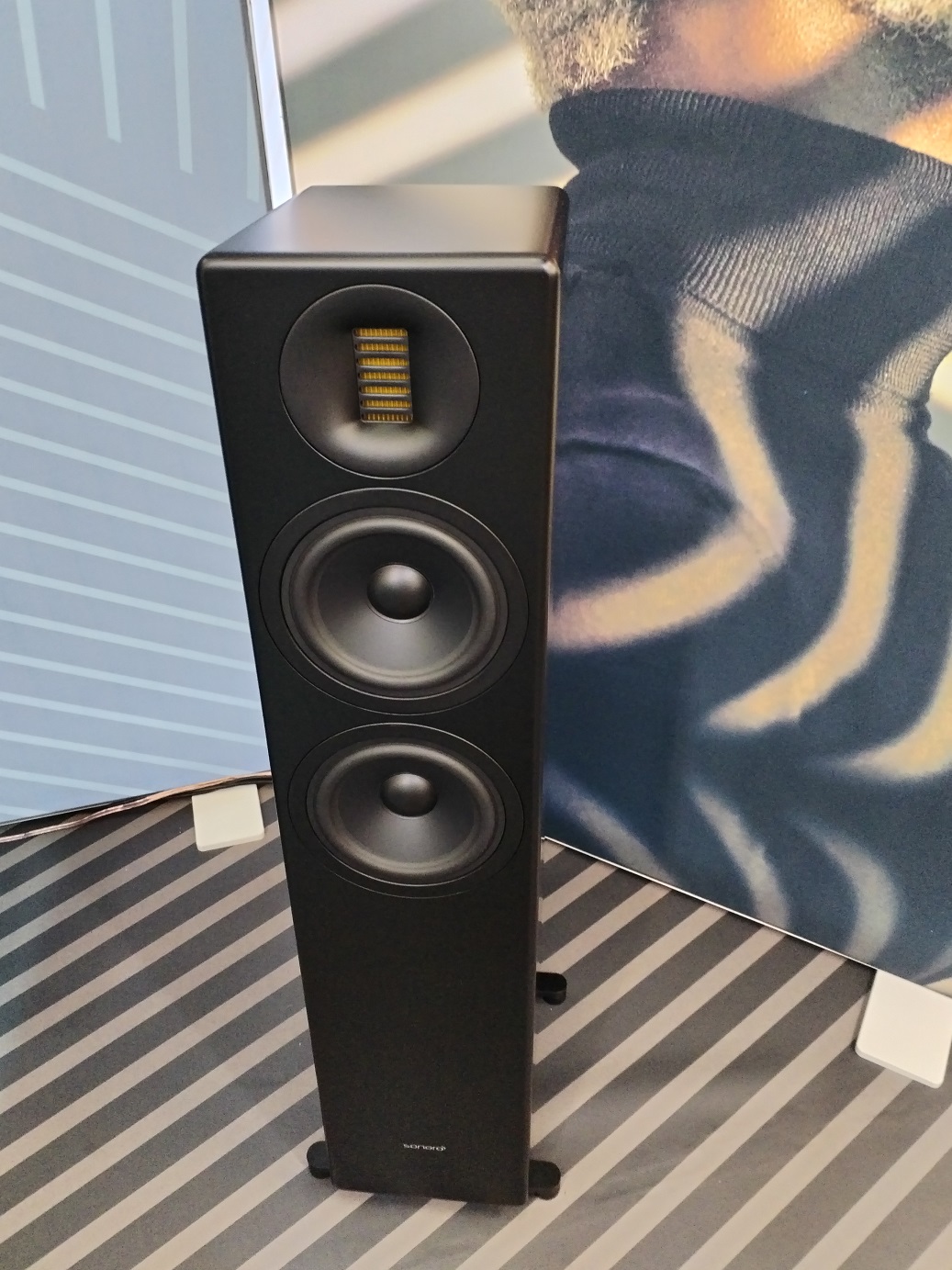
Also the Spanish Xtonebox were back with a Soundsclever system,
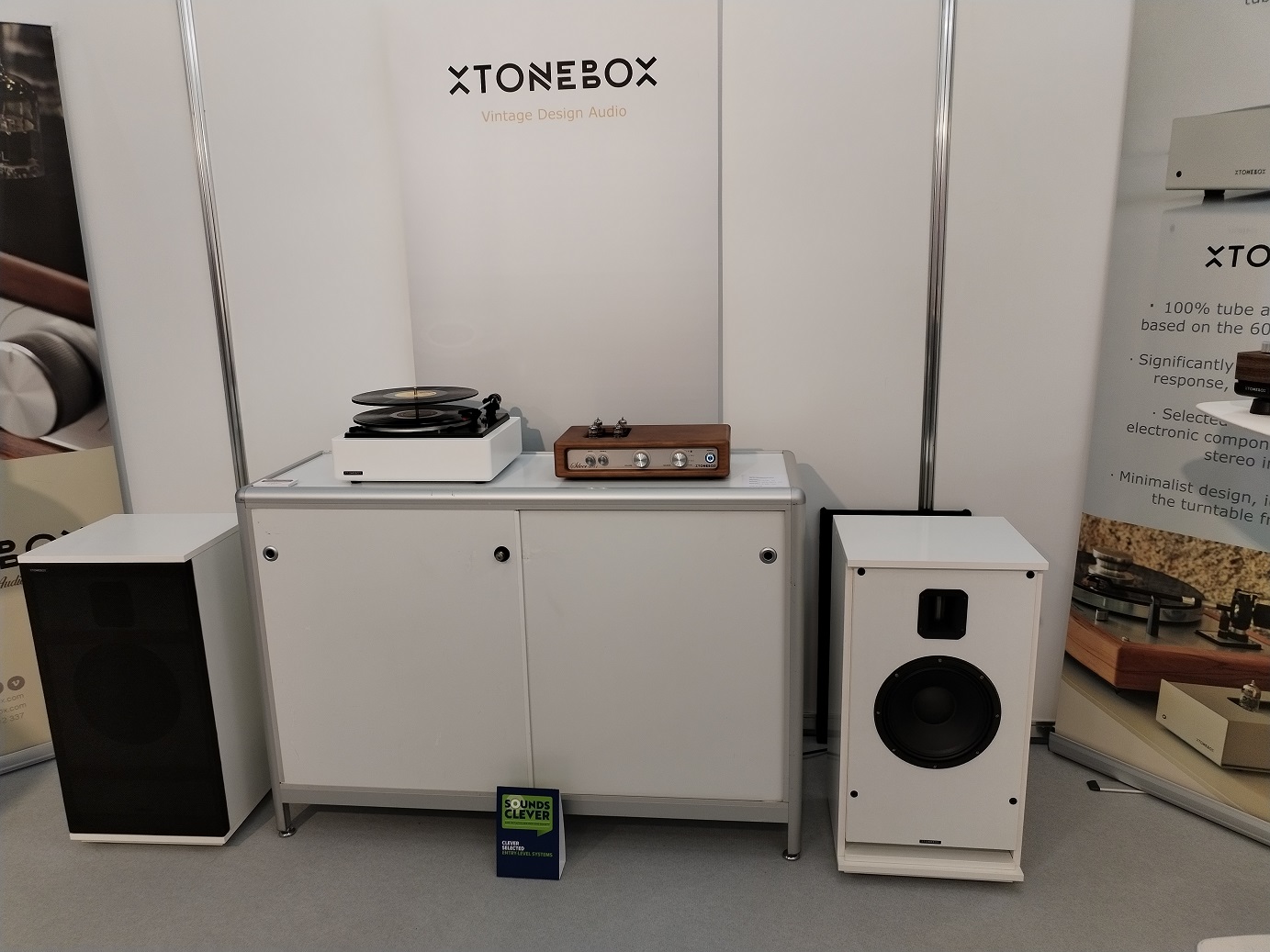
with their typical vintage style: 121ST turntable and the horrible disc-changing mechanism, for € 925, Silver 6011 integrated amplifier, for € 1.550,
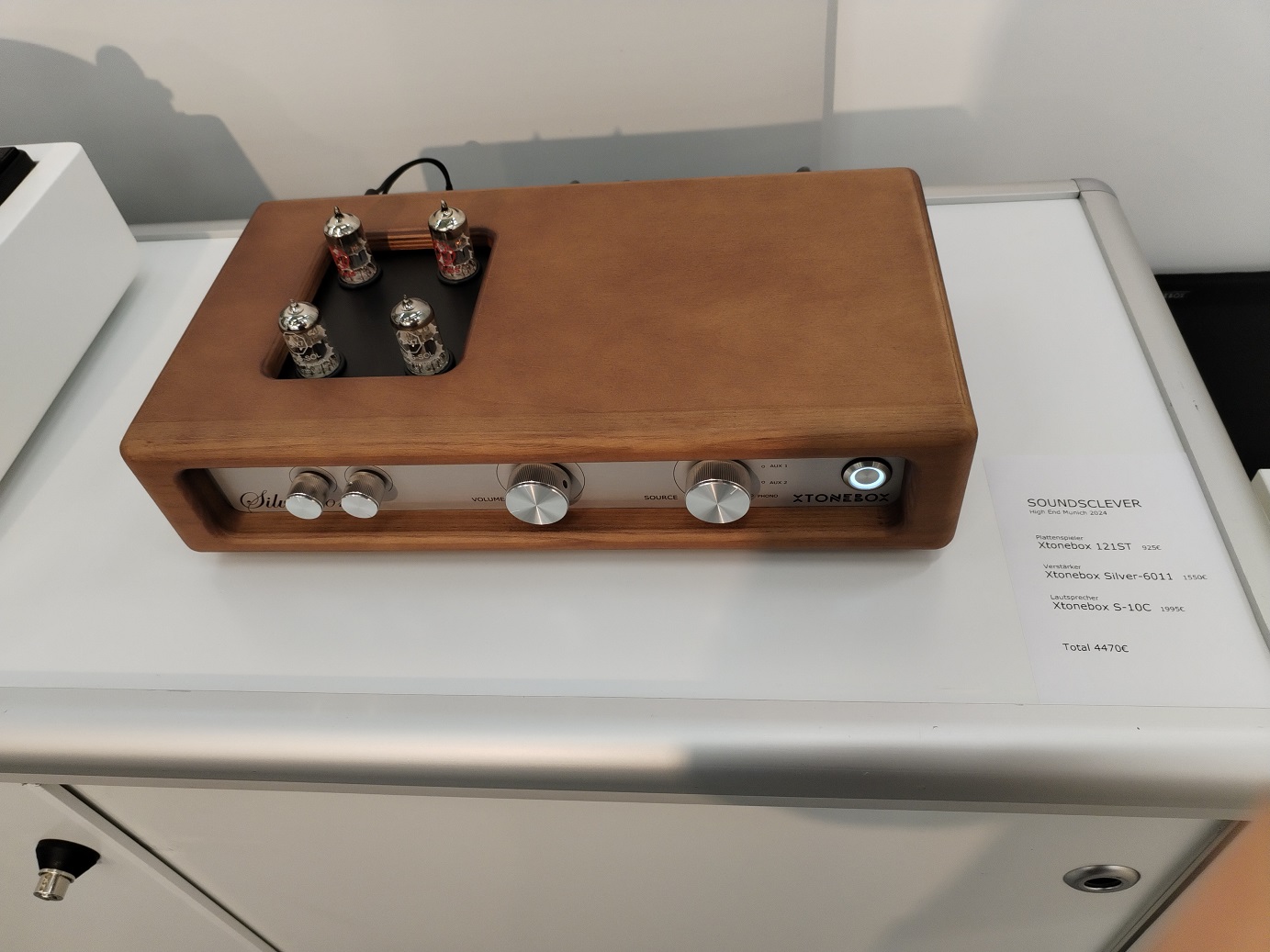
and S-10C loudspeakers, for € 2.000.
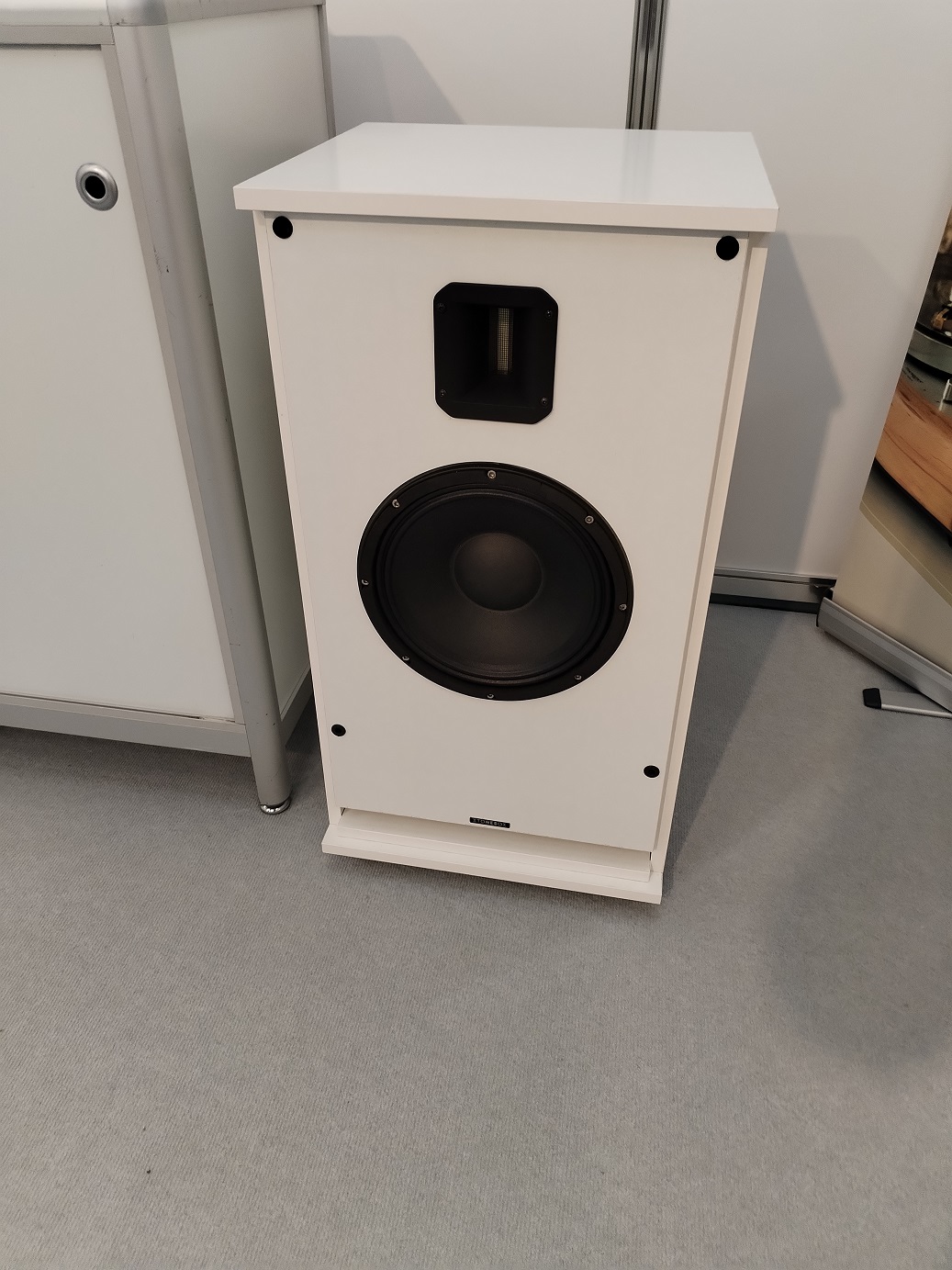
This Galician manufacturer was born as an assistance centre specializing in repairs of vintage equipment, especially Dual turntables (the old Dual), but also offers its own equipment, albeit always designed with an eye to the past.
At the show, they presented the prototype of an idler-driven turntable, which they plan to make available in September or October, at an indicative price of € 2,000, which may vary depending on the arm they mount.
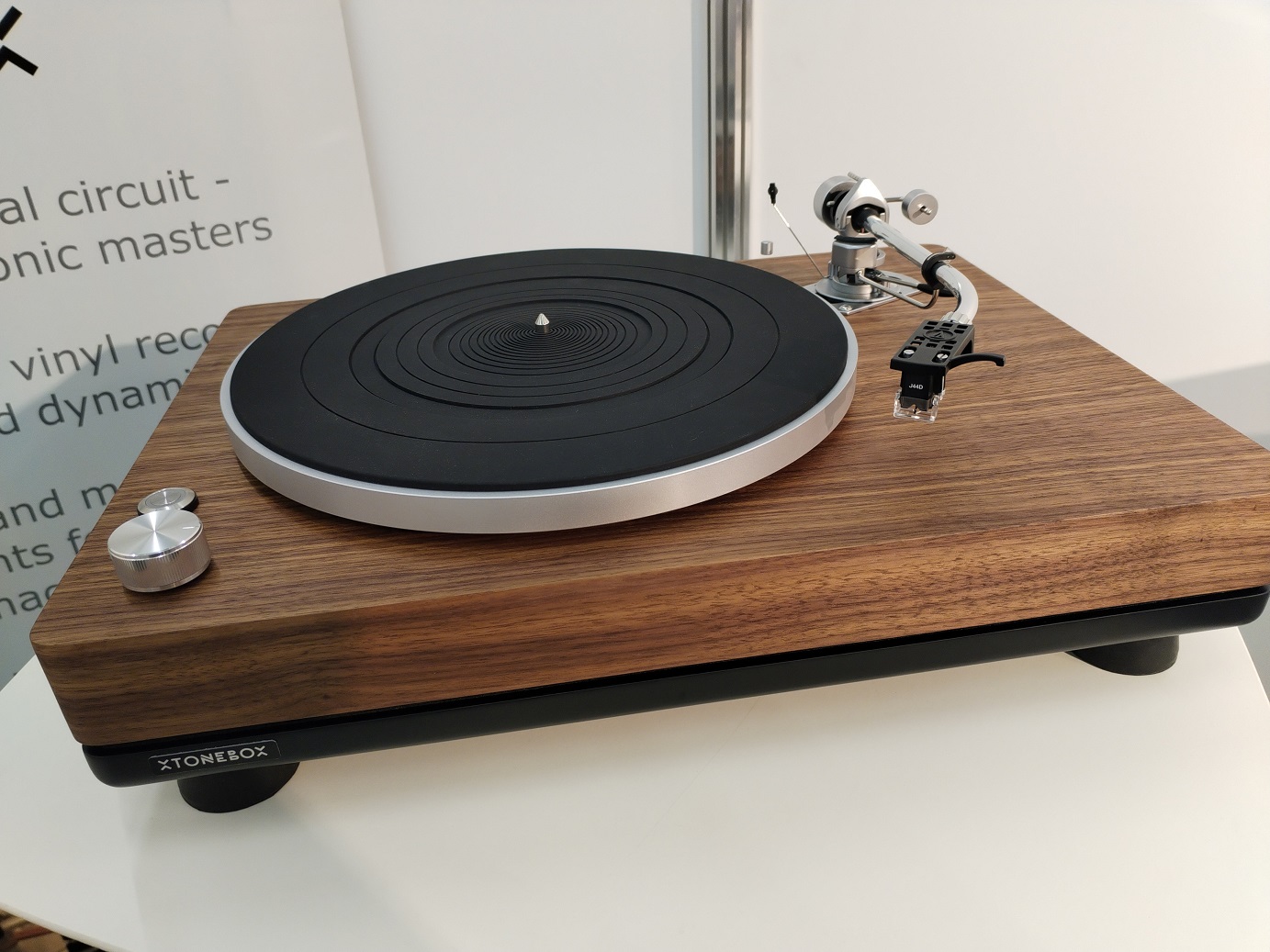
They also exhibited their 60-SP tubed pre-phono already seen last year, this year exhibited naked
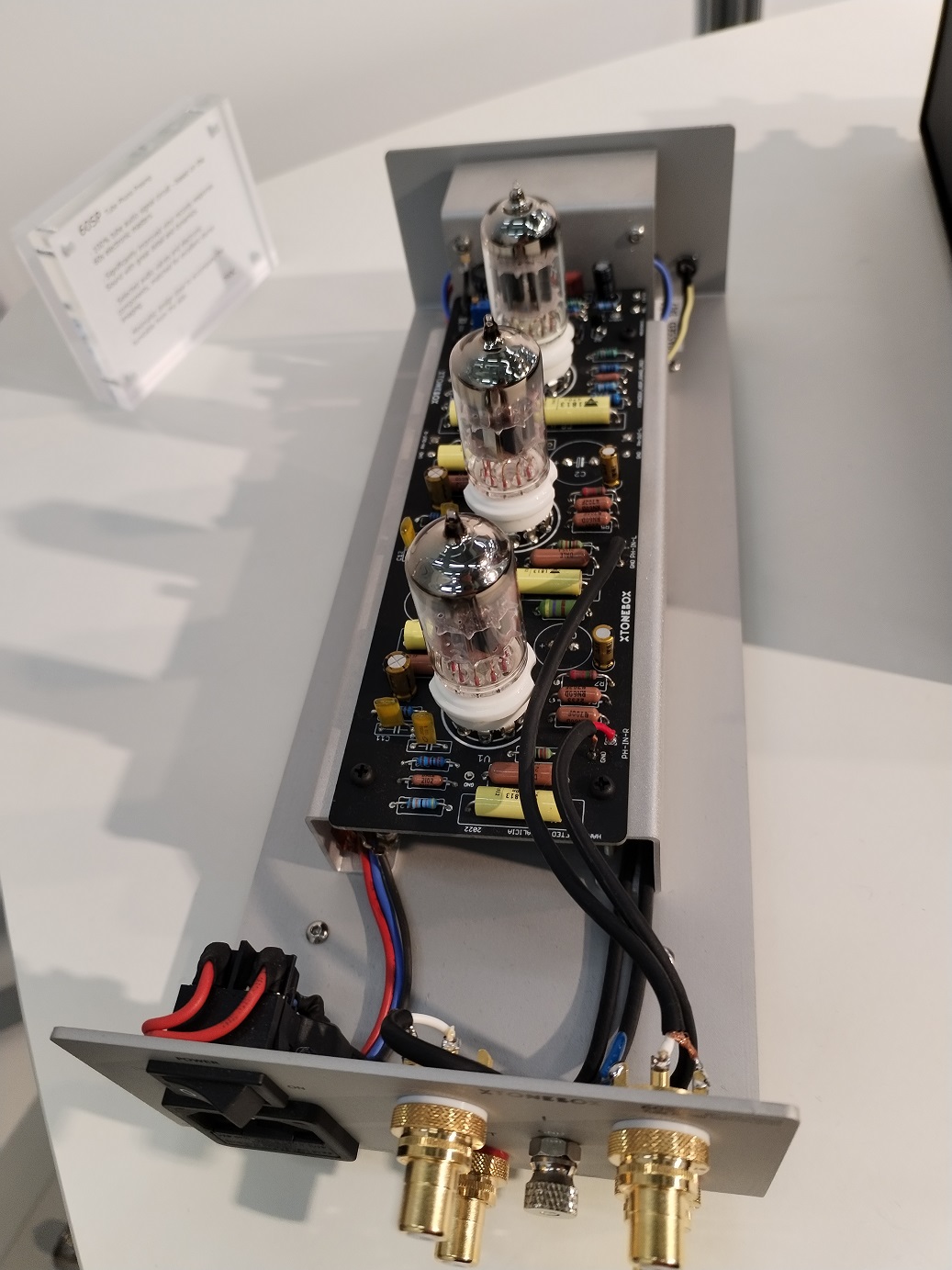
and, new for this show, their 60 SUT, basically a chassis containing two step-up transformers for MC cartridges; its price is just short of € 1,000 because, I was told, they mount the renowned and very expensive Lundahl transformer.
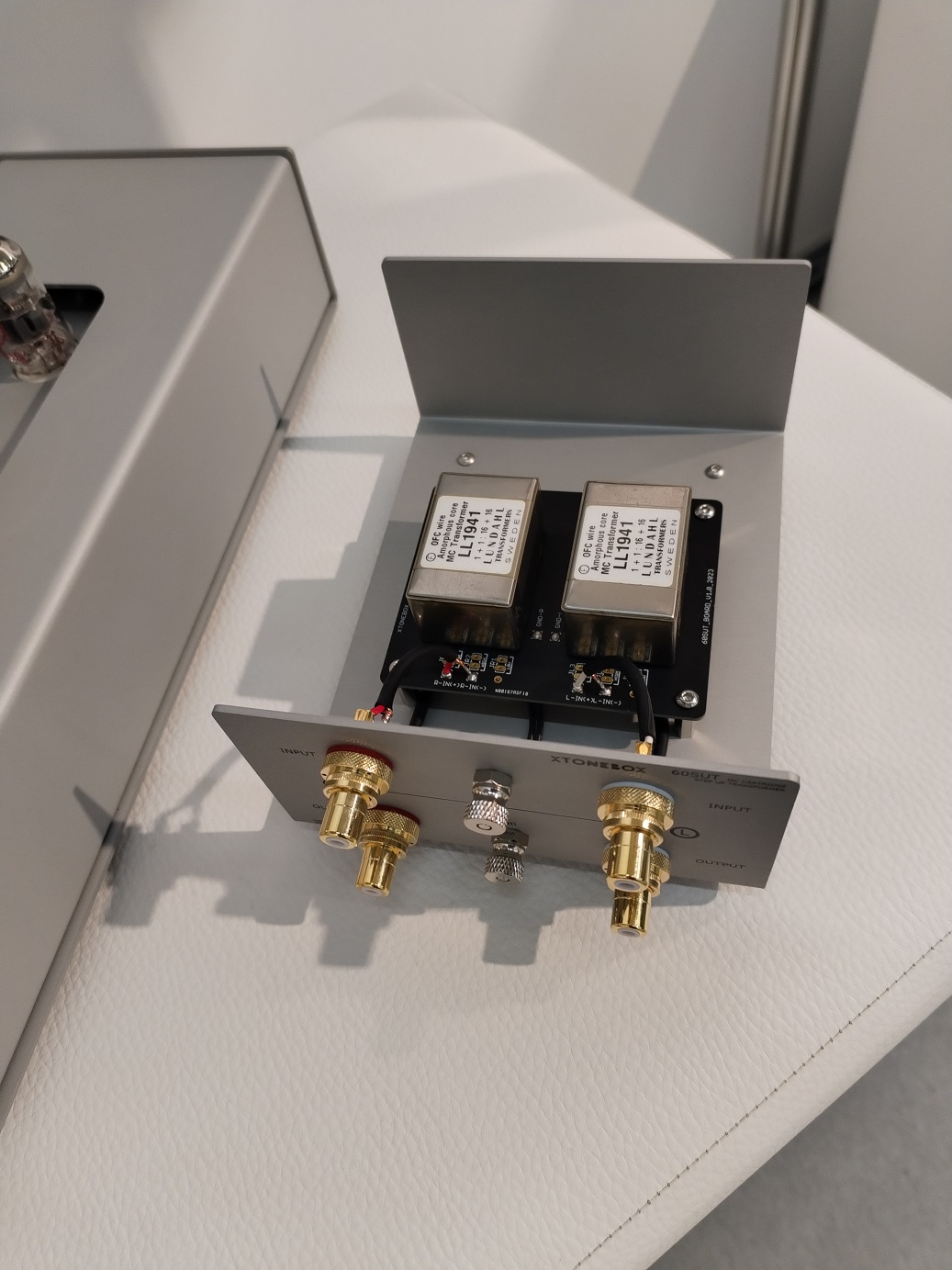
Lastly, Elac exhibited again last year's SoundsClever system.
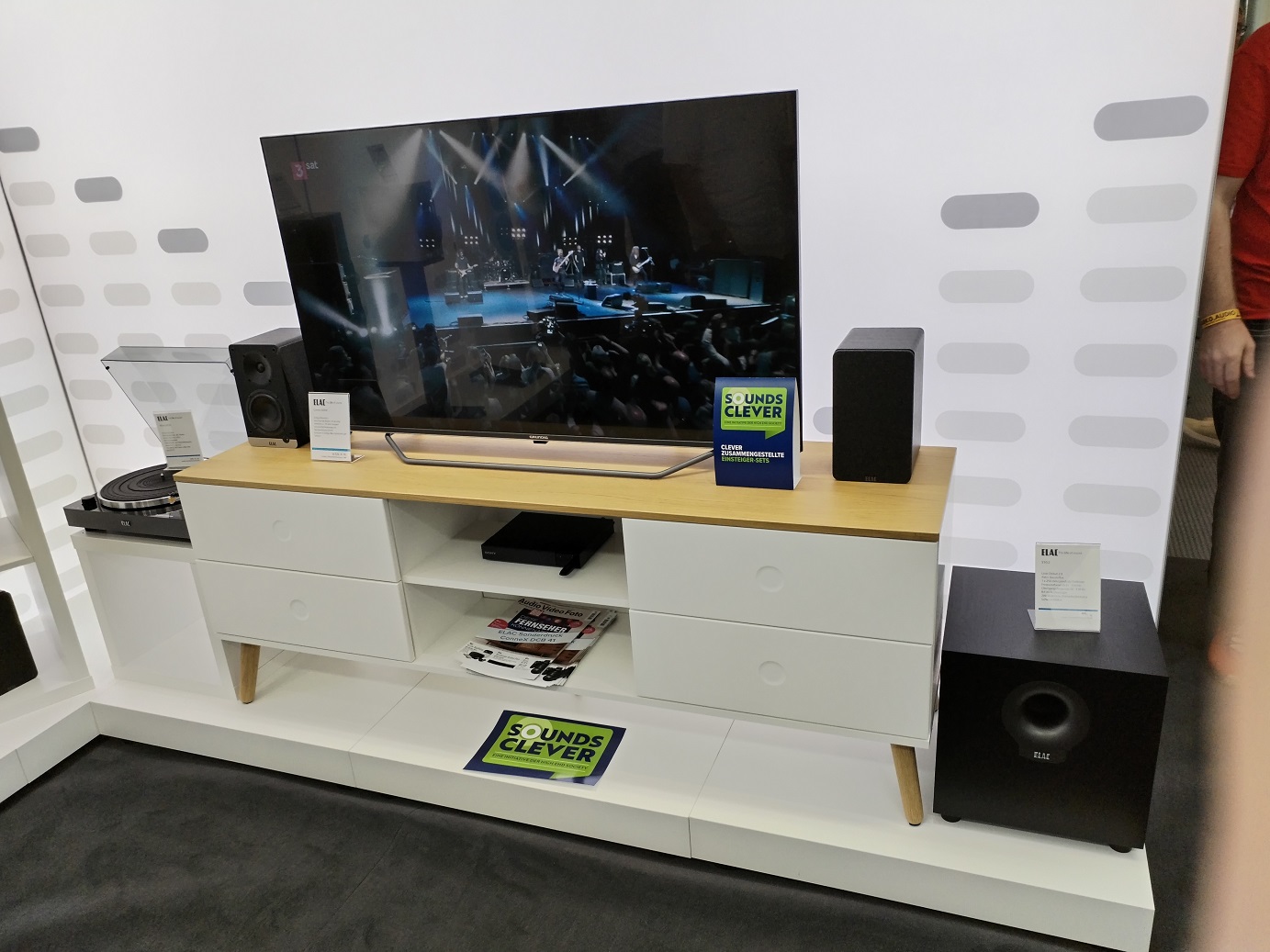
Everything is centred on the Debut Connex DCB 41 active loudspeakers, each for € 529,
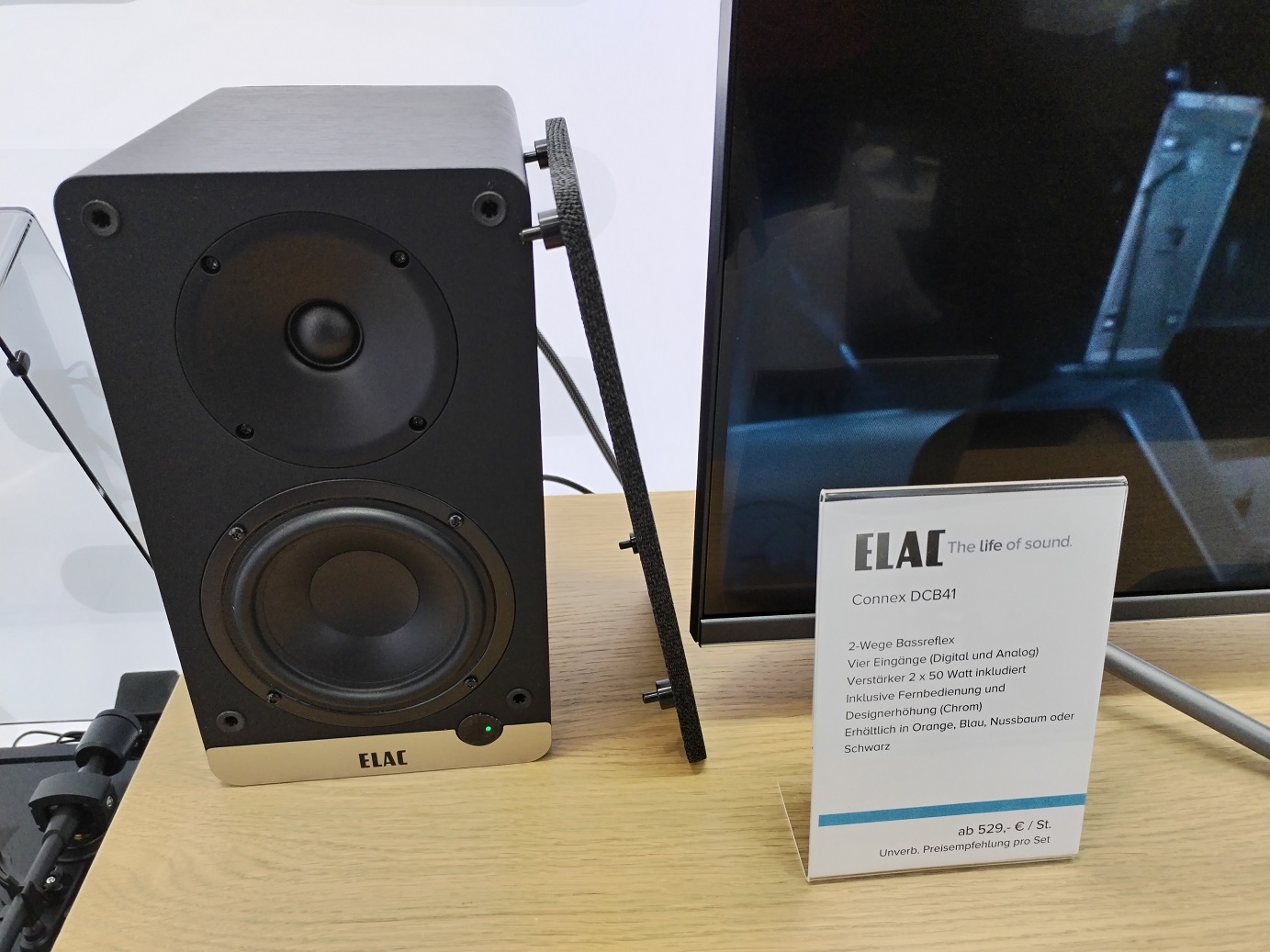
to which both a turntable was connected, the Miracord 5a, for € 500
,
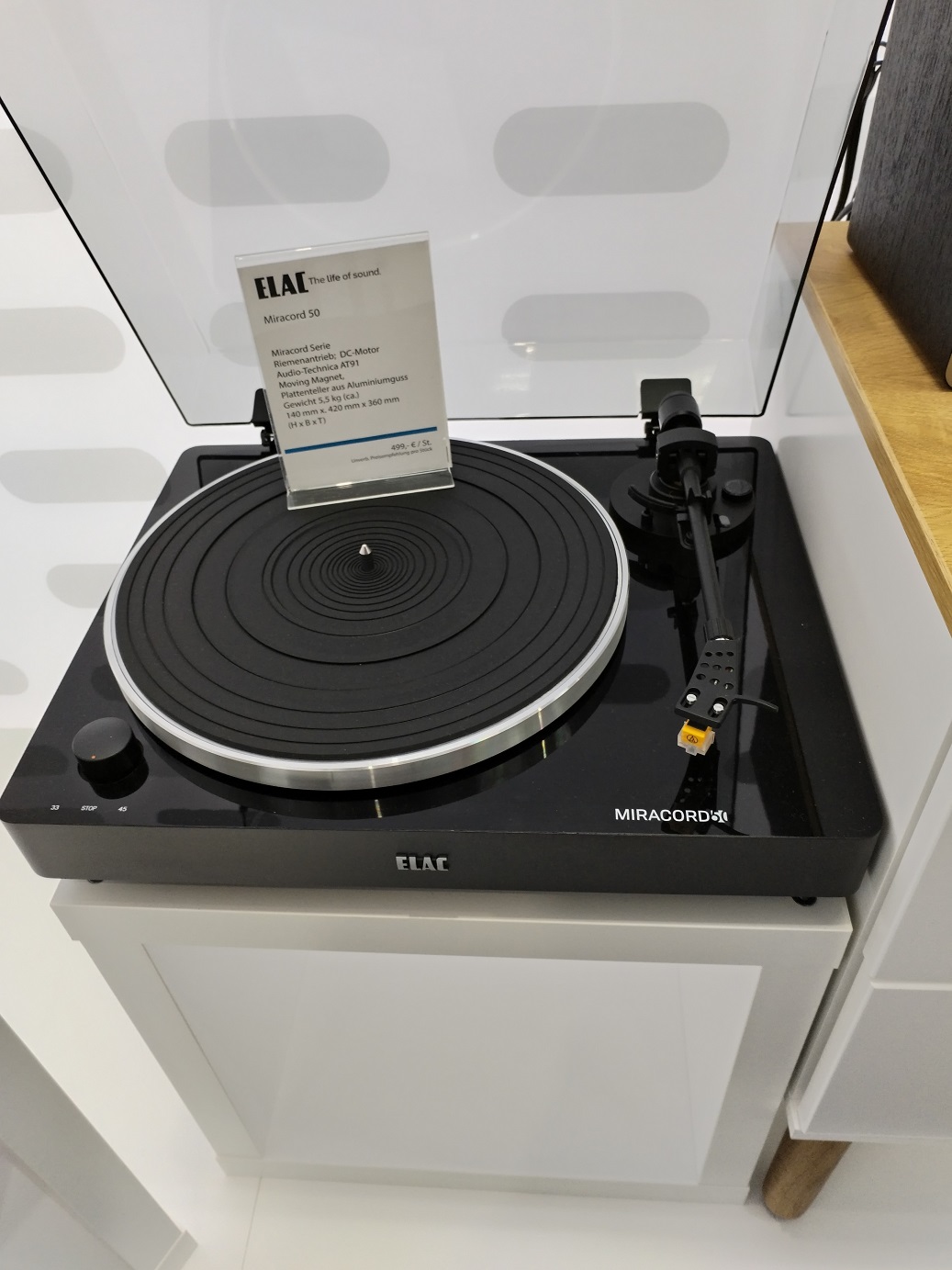
and an active subwoofer, the S 10.2, for € 389.
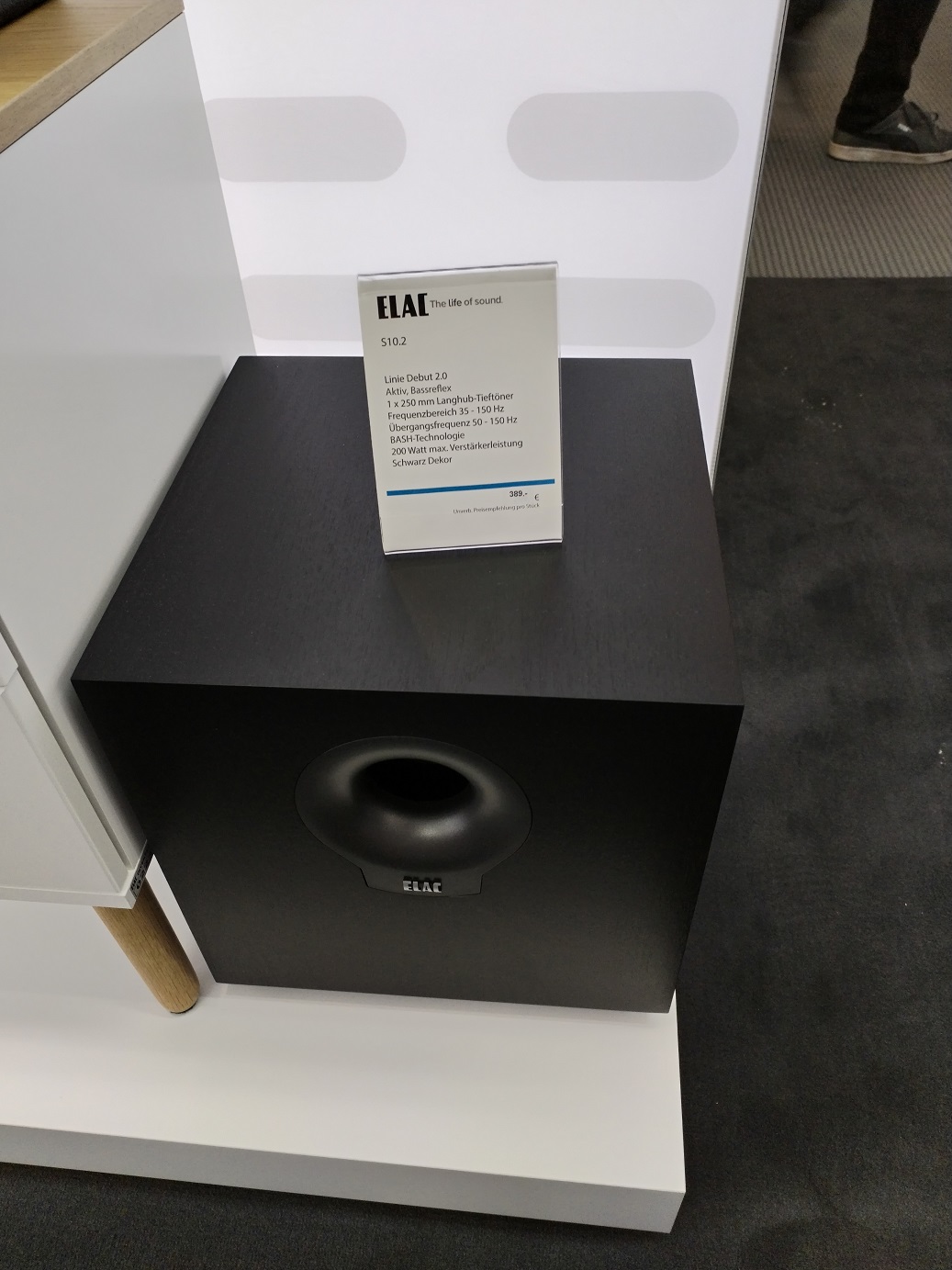
For now I'll stop here: as a first part I'd say that's enough ;-)
Fast forward to Part II
DISCLAIMER. TNT-Audio is neither a shop, nor a HiFi company or a repair laboratory for HiFi components. We don't sell anything. It is a 100% independent magazine that neither accepts advertising from companies nor requires readers to register or pay for subscriptions. If you wish, you can support our independent reviews via a PayPal donation. After publication of reviews, the authors do not retain samples other than on long-term loan for further evaluation or comparison with later-received gear. Hence, all contents are written free of any “editorial” or “advertising” influence, and all reviews in this publication, positive or negative, reflect the independent opinions of their respective authors. TNT-Audio will publish all manufacturer responses, subject to the reviewer's right to reply in turn.
Copyright © 2024 Carlo Iaccarino - www.tnt-audio.com
[ Home TNT-Audio | Staff & Contacts | HiFi Playground | Listening tests | DIY & Tweakings | Music & Books ]